During my five years in Chengdu I knew Ran Yunfei as a scholarly bon vivant who combined brilliant, erudite conversation with a wonderful zest for life. An iconoclastic writer and social critic appreciated even within the Chinese Communist Party for his writings on improving Chinese education, he is a Chinese patriot intensely concerned with better Chinese society although he steered clear of politics and any explicit criticism of the Communist Party. Ran, originally from Chongqing, graduated from the Chinese Literature Department of Sichuan University and was friendly with some other Chengdu writers such as Liao Yiwu, Yu Jie and Wang Yi. Despite avoiding criticism of the Communist Party, Ran Yunfei was detained for two months when the Communist Party panicked in the aftermath of the so-called Jasmine Revolution in 2011. After his release from formal detention he was kept under strict house arrest for several months and his travel even within China was restricted for several years. Since he has published several books on Chengdu local history.
The Ran Yunfei article translated below fascinated me on several levels:
- First, to get a better understanding of Chinese and foreign research on Chengdu where I lived for five years — the byways I ran down doing this translation and some of the online sources it led me to, especially the resources on the University of Toronto website abut Canadian missionareis in Chengdu.
- Second, to better understand the state and possibilities of Chinese research on history these days when some historians are accused by Party hacks of historical nihilism if research leads where the Party prefers not to go.
- Third, is local history less sensitive? Or is it the focus on secondary issues ostensibly not so important that allows for more freedom? Ran Yunfei’s title to his review of some recent work on Chengdu history is revealing: “How to Turn Secondary Topics into First-rate Scholarship”
- And how is local history changing as new sources are discovered and news approaches inspired by the social sciences change our understanding of the past. Could some of this work be in part a gentle push back by Chinese historians at the Chinese Communist Party’s anti-foreign, anti-missionary narratives?
Background
Ran Yunfei Wikipedia article
- 2008: Ran Yunfei: “Where Will the Fear End? A Talk that Could Not Be Delivered”
- 2010 Ran Yunfei: Pathological Stability is the Root of Social Instability
- 2010: Ran Yunfei on Liu Xiaobo’s Nobel Peace Prize
- 2010: Ran Yunfei — “How I Lived My Life in the Year 2010”
- 2011: Wang Yi’s Diary — Now I Must See My Friend Ran Yunfei Become a Prisoner
- 2011: China Releases Dissident Blogger, With Conditions
- 2012: Ian Johnson’s New York Review of Books interview with Ran Yunfei: Learning How to Argue
- 2015: A Writer Turns to Christ
Books by Ran Yunfei
“What I Think About Zhuangzi”
“Incurable Disease: Crisis and Critique of Chinese Education”
“The Exile of Handwritten Manuscripts”
“The Road to a Foolish Empire”
“The Vanguard Trapped in a Snare: Borges”
“The Sharp Autumn: Rilke”
“Living Like Tang Poetry”
“Entering Chengdu from the Sideline of History”
“The Reasons Why I Got Addicted to Zhuangzi”
“Wu Yu and the Republican Era He Lived In”
“The Lungs of Ancient Shu: the Chronicle of Daci Temple”
“Give Freedom to the One You Love” (collection of published essays on Chinese education)

Ran Yunfei | How to Turn Secondary Topics into First-rate Scholarship
August 12, 2019 15:21 (Read: 257)
Reprinted from WeChat public account: Everyone, August 12, 2019
On the Research Center of Local Archives website
I spent a month reading reading all six Chinese language books published by historian Wang Di 王笛 thus far. They are:
- 《跨出封闭的世界:长江上游区域社会研究(1644—1911)》(Third Edition, Peking University Press, September 2018,[“Breaking Out of a Closed World: A Study of the Upper Yangtze River Region Society (1644-1911)”] abbreviated as “Breaking Out”),
- “Street Culture: Chengdu’s Public Space, Lower-Class People, and Local Politics (1870-1930)” 《街头文化:成都公共空间、下层民众与地方政治(1870—1930)》(2013 edition, Commercial Press, abbreviated as “Street Culture”),
- The Teahouse: Small Business, Everyday Culture, and Public Politics in Chengdu, 1900-1950《街头文化:成都公共空间、下层民众与地方政治(1870—1930)》(2010 edition, Social Sciences Academic Press, abbreviated as “Teahouses”),
- 《走进中国城市内部:从社会的最底层看历史》(2013 edition, Tsinghua University Press, [Entering Inside Chinese Cities: A Historical Perspective from the Bottom of Society”] [abbreviated as “Entering”),
- Violence and Order on the Chengdu Plain: The Story of a Secret Brotherhood in Rural China, 1939-1949 《袍哥:1940年代川西乡村的暴力与秩序》(2018 edition, Peking University Press, abbreviated as “Violence and Order”), and
- 《消失的古城:清末民初成都的日常生活记忆》(2019 edition, Social Sciences Academic Press, [“The Vanished Old City: Memories of Daily Life in Late Qing and Early Republican Chengdu” ] abbreviated as “Vanished”).
I agree and disagree with Wang Di on some issues. In the spirit of seeking truth, I will share them with fellow enthusiasts.
[Translator’s Note: Three of University of Macao Professor Wang Di’s books are available in English:
- Violence and Order on the Chengdu Plain: The Story of a Secret Brotherhood in Rural China, 1939-1949
- The Teahouse: Small Business, Everyday Culture, and Public Politics in Chengdu, 1900-1950 and
- Street Culture in Chengdu: Public Space, Urban Commoners, and Local Politics, 1870-1930, End note.]
Wang Di’s six books can be roughly categorized into four types:
First, there are theoretical explorations combined with his research experience. These books aim to enlighten future scholars, showcase his work to colleagues, and disclose it to readers, such as “Entering.“ It can be said that by reading this book, one can easily understand Wang Di’s other research. However, he does not engage in the study of the history of historiography or historical philosophical thinking; instead, he interprets the methods he has employed in his own research.
Second, his earliest monograph, “Breaking Out,” as the title suggests, represents the first step in academic research. It is through “Entering” that one can delve deeper. This book predominantly adopts a macro, national, long-term, and elite perspective, covering various aspects of the upper Yangtze River region’s society. It significantly differs from later micro-level studies, local perspectives, lower-class perspectives, and those focusing solely on certain aspects of Chengdu.
Third, “Street Culture,” “Teahouses,” and “Violence and Order” are the three books that constitute the core of Wang Di’s research and are well-known among the academic community or readers.
Finally, there is a non-academic popular work, “Vanished.” 《消失的古城:清末民初成都的日常生活记忆》 The notable feature of this book is that it transforms interesting and story-like footnotes into the main text.
The three books, Street Culture included, set Wang Di’s work apart from most previous Chengdu studies. Just as Sichuan cuisine offers many ways to cook a chicken and several ways to prepare chili, Wang Di’s expertise shines through in his varied research approaches. Of course, it takes a skilled chef to avoid monotony, as too much of the same is tiring. In the case of Chengdu, Wang Di’s is undeniably exceptional.
These days we don’t have a clear view of Chengdu’s history. Or rather, most of the so-called studies are nothing more than copying and recopying old stories, a mere excuse for professional employment and a waste of a life. Most of the research on Chengdu history, whether general history or individual studies, is highly traditional; few outside of the circle of professional historians know about it. It is the writing and research of non-historians, such as Li Jieren, Liu Shahe, Yuan Tingdong, Dai Jun, and others about Chengdu history that is well-known to the public.
Few books on the historical research of Chengdu can transcend the confines of academic circles as do the work of the professional historian Wang Di. This is because Wang Di’s writing does not stick to rigid academic language and concepts. Instead, he either tells stories or outlines historical details. Without compromising academic rigor, Wang Di’s writing aims to engage with his readers and win their interest much like the historical writings of authors such as Jonathan Spence and Philip A. Kuhn.
Of course, this does not mean that scholars’ previous research on Chengdu has been insignificant. Works like American scholar Kristin Stapleton‘s
- Civilizing Chengdu: Chinese Urban Reform, 1895–1937. Harvard East Asian Monographs, no. 186. Cambridge, MA: Harvard University Asia Center, 2000. Chinese edition published in April 2020 by Sichuan Wenyi Chubanshe under the following title: 新政之后:警察、军阀与⽂明进程中的成都 (1895-1937) and
- Fact in Fiction: 1920s China and Ba Jin’s Family. Stanford, CA: Stanford University Press, 2016. Chinese edition published in June 2019 by Sichuan Wenyi Chubanshe under the following title: 巴⾦《家》中的历史:20世纪20年代的成都社会
provide different research perspectives from Wang Di, but they undeniably bring about a fresh understanding of Chengdu.
Other works such as
- Wang Dongjie‘s 《国家与学术的地方互动:四川大学国立化进程(1925—1939)》[“Interaction between the Nation and Academia: The Nationalization Process of Sichuan University (1925-1939)” ] and《国中的“异乡”:近代四川的文化、社会与地方认同》[ “The ‘Foreign Land’ in the Nation: Modern Sichuan’s Culture, Society, and Local Identity,” ]
- Li Deying‘s 《国家法令与民间习惯:民国时期成都平原租佃制度新探》[“State Laws and Folk Customs: A New Exploration of the Chengdu Plain’s Tenancy System in the Republican Era,” ]
- Liu Xinjie‘s 《民法典如何实现:民国新繁县司法实践中的权利与习惯》[ “How the Civil Code is Implemented: Rights and Customs in the Judicial Practice of Xin Fan County in the Republican Era,”]
as well as certain articles in the “Modern and Contemporary History” section of the journal 《川大史学》 [“Sichuan University Historical Studies”] journal, have greatly contributed to deepening our knowledge of Chengdu.
I recently read Qiu Shuo‘s”邱硕《成都形象:表述与变迁》[ “Chengdu’s Image: Representation and Transformation,] which can help us get a better understanding of the history of Chengdu’s image. However, if we examine the tension between anthropological “local knowledge” and national narratives as explained by Clifford Geertz, as well as the central and peripheral aspects of power distribution in political anthropology, we find we still need a more rigorous academic exploration.
Some may ask, why spend so much effort on reading these books?
First, although I am not originally from Chengdu, I have lived here for over thirty years, so I am interested in understanding everything that happens here. Second, I consider myself a Chengdu researcher, but I believe that compared to Wang Di’s research on Chengdu, I fall short. His methods, perspectives, and depth of research far exceed those of many others, including myself, — naturally this is related to his academic training. Although he is engaged in historical studies, he actually employs methods from other disciplines to approach his historical research. This means that he does not follow the traditional path of cultural and historical studies. This seemingly narrows Wang Di’s research down to special topics such as social aspects of the upper reaches of the Yangtze River, the Pao brothers, Chengdu teahouses, Chengdu street culture. Wang Di, however, is not a traditional scholar specializing in documenting the past of a particular locality. Wang Di combines microscopic history with a broad vision, as they say, “seeing the big picture through small details.”
On the other hand, his research approach is also part of the transformation in traditional historical research — a shift from holistic studies to an interest in minute details, from the pursuit of certainty to the description of uncertainty. Much like transition from the first to the third generation of the Annales School: seemingly minor yett profoundly meaningful. In brief, why has traditional historical research increasingly come to rely upon social science disciplines such as anthropology, sociology, economics, and religious studies? History by itself clearly lacks adequate explanatory power when confronting globalization and complex social issues. Of course, this problem is not specific to historical studies. This paradigm or trend has arisen from the cross-disciplinary nature of many fields, indicating the apparent limitations of many individual disciplines in isolation. If previous Chengdu research had some flaws in terms of being overly general or focused on trivial matters, then Wang Di’s writing reveals the texture of Chengdu’s social life through the combination of micro-histories with a broad vision. Wang Di’s practice resembles what the “middle-range theory” of the American sociologist Robert Merton preached, a reconciliation of a just-the-facts positivist rejection of theorizing and grand narratives lacking granular detail.
New Methods in Chengdu Research
Wang Di discussed research methods and historical materials about Chengdu in his book prefaces especially in “Approaching” (《走进》). Often he does not respond explicitly to criticisms from other scholars. These include Ma Min’s critique of Wang Di’s “Street Culture: Chengdu’s Public Space, Lower-class People, and Local Politics, 1870-1930” (published in the book 追寻已逝的街头记忆——王笛<街头文化:成都公共空间、下层民众与地方政治,1870—1930>评述》[“Modern Chinese Cities and Popular Culture” edited by Jiang Jin and Li Deying, pp. 359-391, New Star Press, 2008)] and Li Jinzheng’s 李金铮《小历史与大历史的对话:王笛<茶馆>之方法论》(《近代史研究》2015年第三期) “A Dialogue between Small History and Big History: Wang Di’s Methodology in ‘Teahouse” (published in the “Journal of Modern History Research,” 3/2015). Those two scholars made comparative and in-depth analyses of the two books “Street Culture” and “Teahouse.” Here apart from necessary references for the sake of discussion, references are kept brief. My approach to the discussion is twofold: comparing it with existing research on Chengdu and addressing aspects that have been rarely discussed by others or only addressed indirectly. Here I offer my own insights in order to provide a fresh perspective.
Major Topics and Real Issues
If you have read Wang Di’s books carefully, such as any of his works like “Teahouse” or “Approaching,” you can see that in the prefaces, he always explains and interprets his research methods and purposes, even defending them to some extent. Why does he do so? It is because his research methods in new cultural history and microhistory have not yet gained a complete consensus among his peers and readers in China.
Firstly, there are differences in readers’ understanding and expectations. For example, readers of “Violence and Order” (《袍哥》) may simply consider it as an interesting story. When it comes to tea culture, readers expect a good story, but the author’s considerations are founded on his understanding of grassroots legal decentralization and the power struggle between the authorities and the people.
Furthermore, rather than saying there are differences in the understanding of methods, materials, and purposes among fellow historians, it is more accurate to say that traditional Chinese historiography has a strong inclination towards grand narratives and ideological dynamics. The traditional approach of the “Comprehensive Mirror for Aid in Government” (《资治通鉴》) of a history aimed at serving practical purposes has significant market appeal and deeply ingrained psychology. To the extent that the authoritative 《近代史研究》2012年第四期 “Journal of Modern History Research” dedicated a column in its 4/2012 issue to discuss “中国近代史研究中的‘碎片化’””Fragmentation in Chinese Modern History Research,” and Wang Di responded with his article entitled 《不必担忧“碎片化”》”No Need to Worry about ‘Fragmentation.'”
Wang Di’s classic response to his peers is presented in a famous manner that hides the names of the critics, known as the “second-rate topic” “二等题目. It is not quite fair to call this a response because the proponent of the “second-rate topic” was not specifically criticizing his own research; others had already raised this argument. Given the reputation of the person who raised this question within the Chinese research community, Wang Di believed it was necessary to pre-emptively defend himself.
In his books “Teahouse” (p.14) and “Approaching” (p.16), Wang Di almost verbatim mentions this issue: “A highly respected and accomplished Chinese-American historian once advised, ‘Never work on second-rate topics.‘ Implicit in his words is the idea that only by choosing important subjects can one become an outstanding historian. Thus, he focused on major topics concerning the nation and people’s livelihood. His perspective resonated with many domestic historians. However, I have doubts about whether there truly exist so-called ‘first-rate topics‘ or ‘second-rate topics.'”
Wang Di does not mention by name the renowned Chinese-American historian he criticizes, who is known for his outspokenness and intellectual self-assurance. This historian is none other than Ping-ti Ho. Influenced by Zeng Guofan’s principle of “building a solid fortress and fighting deadly battles,” He Bingdi believed that in life, as well as in academic pursuits, one should address significant issues and focus on first-rate topics. This view was not his original creation but was said to him by the scientist Chia-Chiao Lin, whom he admired, during a conversation: “No matter what field you’re in, never work on second-rate topics.“《读史阅史六十年》p.104,广西师大出版社2005年版) [“Sixty Years of Reading and Studying History,” p.104, Guangxi Normal University Press, 2005 edition]. The nature of science makes the timeliness, urgency, difficulty, and cutting-edge nature of scientific research the central focus in selecting topics.
The essence of scientific research is solving problems (not necessarily practical, as in the case of famous conjectures in mathematics, to the point that mathematician G. H. Hardy believed the greatest function of mathematics lies in its uselessness), the concept of a “first-rate topic” appears inherently important. However, whether the emphasis on “first-rate topics” in scientific research can naturally be applied to research in the humanities and social sciences is uncertain, as the differences in their confirmability and falsifiability are evident. As for Ping-ti Ho , even extending this idea to a “Tsinghua University spirit,” seems to narrow the scope of group (the alma mater) spirit.
Wang Di’s criticism of Ping-ti Ho’s “first-rate topics” is not an attempt to deliberately sing a different tune just to be contrary. Rather, it reflects a shift in historical paradigms. The shift from positivist history in the West to the exploration of language and narrative, as well as new cultural and microhistorical approaches, occurred decades ago. In China, however, the dominance of grand narratives and utilitarianism continues to shape the mainstream of historical research. This is why Wang Di argues that there are not too many small-scale studies or so-called “fragments” but rather, that there are not enough of them.
Moreover, many historical studies today remain confined to traditional realms of literature and history and do not incorporate relevant social science methods. This is particularly true for most Chengdu studies. In other words, some historians are overly concerned about the encroachment of disciplines such as anthropology, sociology, and economics on the territory of history, blurring the boundaries of the field. Wang Di believes this unreasonable. Scholars who study the history of historiography should have the most say in this matter because they investigate the historical development of historical scholarship. Wang Di’s friend, Q. Edward Wang (Wang Qingjia 王晴佳) , who has made significant contributions to the study of the history of historiography, also supports Wang Di’s views, especially in《新史学讲演录》[“Lectures on New Historiography”].
In Wang Di’s view, those who focus on so-called “first-rate topics” may inevitably use them as a means to satisfy their ambition and desire to master the study of history. This is a characteristic of traditional Chinese intellectuals, who consider themselves elite and often adopt the mindset of advisers eager to offer advice at any time. This attitude compromises the relative independence of scholarly pursuits and lacks the attitude that truth should be sought for its own sake. .
Furthermore, while Ping-ti Ho employs some modern methods in his historical research, his historical perspective is still influenced by the Chinese tendency to treat history as a religion and the tradition of governance and practicality. As a result, Chinese historians had an almost instinctive influence of the official histories of the early dynasty and kingdom including of the Yin, Zhou, Jin and Chu and the Spring and Autumn Annals of Lu. The deep-rooted reverence of the Chinese for power also played a role. With power concentrated in political elites, particularly in the upper echelons, who control the allocation of resources. Therefore, it is not surprising that the imperial annals and official gazettes have always been the prime materials for Chinese history. The choice of research topics inherently carries power since it is connected to the worship of authority, something many Chinese historians feel passionately about. While the saying “Acquire literary and martial skills, and get in good with the imperial family” may sound harsh, many practitioners of history still operate on this principle.
Of course, this cannot be solely blamed on today’s Chinese researchers because this has been so for thousands of years. Even if now they live elsewhere, they are inevitably influenced by these things. Most humanities research is incomplete and uncertain and so is often influenced by preconceived historical perspectives. No one approaches the study of history without preconceptions. Total objectivity and value neutrality are merely ideals that cannot be fully achieved. Even in scientific research where it is difficult to completely escape preconceptions. Ultimately, historical perspectives are also influenced by worldviews and values.
Wang Di disagrees with He Bingdi’s views and repeatedly quotes a passage from Fernand Braudel in some of his books to signal his intention: “Unfortunately, our knowledge of those grand palaces exceeds that of the fish market. Fresh fish is transported to the market in water tanks, where we can also see a large number of dogs, wild chickens, and quails, and where we can make new discoveries every day.“ (Street Culture, p. 23)
Wang Di stresses: “Studying the everyday and studying the lower strata of society ultimately comes down to the problem of historical perspectives and methodology. Although our mainstream ideology constantly emphasizes that ‘the people are the driving force behind historical change,’ our historical research actually undervalues this driving force.” (Entering, p. 15) Plastic flowers serve a decorative purpose, and it is pointless to try to study their fragrance. However, the sentence “Do we not believe that our daily lives, compared to sudden outbreaks of political events 突发的政治事件 , are tied more closely to our destiny?” (p. 14) is worth deep consideration. Furthermore, in Wang Di’s view, focusing on the small scale to understand the bigger picture is practical: “Studying the most basic units of society and delving into the inner workings of cities will not hinder historians from examining more macroscopic and significant events; on the contrary, it will help them gain a deeper understanding of such issues.“ (Teahouse, p. 424)
What is a real question? Apart from the grand questions like “What is human nature?” or “Where do we come from and where are we going?. Aren’t there these questions wrapped up in the details of everyday life? “I believe that the importance of the research subject itself doesn’t exist; the key lies in whether the researcher has a macroscopic perspective. This requires historians to seriously consider how to handle those intricate details, just like building a house. The structure of the house is akin to the purpose and core of the book, while the bricks and tiles represent the details of the book. If there are only details, the building cannot stand.” (《走进中国城市内部:从社会的最底层看历史》(2013 edition, Tsinghua University Press, [Entering Inside Chinese Cities: A Historical Perspective from the Bottom of Society”] [abbreviated as “Entering”, p. 69)
Following this line of thought, a natural conclusion is reached: “The research value of history is not determined by the importance of the research subject itself, but by the historical perspective and interpretation of the research. Historians can discover profound connotations of understanding and comprehending history from seemingly ordinary objects. Historians have different understandings of what constitutes research value, often determined by their historical perspectives and methodologies.” (Entering, p. 71) I believe this is a powerful response to scholars who consider research topics more important than historical perspectives and methodologies.
Although Wang Di insists on microhistory, he does not lack a macroscopic perspective. From a sub-level perspective, he observes the city where he once lived. To what extent does he adhere to such methodology and historical perspectives? Just by reading the preface of the revised edition of his first book, “Breaking Out,” one can find out. He acknowledges being influenced by the G.W. Skinner’s core-periphery standard market area model and Fernand Braudel‘s total history. For example, he no longer sees popular beliefs as superstitions but changes them to traditional society with ideological implications. Wang self-critically acknowledges that the book is influenced by the elite perspective of cultural hegemony and discourse hegemony. Subsequent writings are all corrections in this regard.
This also represents a reaction against his earlier education under Wei Yingtao’s discourse research model. If you cannot dynamically view the academic development of a person, it may even be difficult to recognize from the titles alone that they are the works of the same person. For example, Sichuan University’s Chen Yingtao 隗赢涛 and Wang Di’s 《西方宗教势力在长江上游地区的拓展》(《历史研究》1991年第三期)”The Expansion of Western Religious Forces in the Upper Reaches of the Yangtze River” (Historical Research, 3/199)]. In fact, the statistical methods and quantitative research used in this article are perfectly aligned with the book “Breaking Out,” and much of the content is also included in Chapter 10,“传统文化的危机与现代意识的兴起” [ “The Crisis of Traditional Culture and the Rise of Modern Consciousness”]. By the way, Tang Yi, a master’s student guided by Chen Yingtao, 唐毅《近代四川教案的反思——从区域性教案看近代中西关系》[“Reflections on Modern Sichuan Missionary Cases: Examining Sino-Western Relations from Regional Missionary Cases”] (I have a copy of the annotated version of this paper), shares that same historical perspective. This is not only a common problem in most modern history research but also the result of students conforming to their teachers’ perspectives.
- Historiography and Local Anthropology
Prominent scholar Wang Qingjia, who has made significant contributions to the study of the historiography of history, states that the emergence of new cultural history is actually the result of the combination of historiography and anthropology 《新史学讲演录》[Lectures on New Historiography], p. 55, published by Renmin University of China Press, 2010). This helps us understand why Wang Di entered the field of new cultural history and microhistory and why he feels so comfortable in it. Let us not forget that his first book was deeply influenced by G. William Skinner, and G. William Skinner’s anthropological background enabled Wang Di to observe not only historical geography and administrative divisions but also the honeycomb structure of rural markets and the macroscopic division of urban areas. Wang Di’s academic training under William T. Rowe led him to deviate from the traditional historiography training in China and instead pursue studies in sociology, anthropology, and political science. This resulted in significant differences in his views on how history should be written, for whom, and what problems it should address.
Despite significant differences in research methods before and after his study abroad, it is worth discussing why Wang Di continues to research Chengdu. This aspect is the main cause of misunderstandings among readers and colleagues. China has a longstanding academic research tradition of focusing on the place where people live and having a sense of attachment to that place. Various perspectives, such as field surveys and practical application, lead scholars to delve into this field. Simultaneously, from the perspective of a scholar actively participating in local life and studying various aspects of the local society, particularly as an outsider utilizing local materials and familiarizing oneself with the living environment, combining research with life becomes a way to acquire identity and recognition.
In other words, scholars of this kind not only bring warmth and practicality to their research but also overcome the dichotomy between their research and local life, effectively integrating into the local society. There are many examples of such scholars, such as Gu Jiegang, Xu Zhongshu, who had never been to or studied Sichuan before the War of Resistance Against Japan but later conducted relevant research and compiled their findings. Not to mention those who study tangible and audible cultural forms, such as architecture, historical geography, archaeology, and dialects, such as Liang Sicheng, Liu Zhiping, Dong Tonghe, who help local people understand their own cultural heritage while ensuring the relevance and progress of their own research.
Researchers studying their own locality have obvious advantages. However, as is widely known, being too close to the subject can also have drawbacks. However well-trained scholars who have long-term experience in living in a heterogeneous culture, looking back at the place where they once are nothing at all like the people who spend all their lives trapped in a cage they had fashioned for themselves. Accomplished researchers in this regard include Fei Xiaotong, Francis L. K. Hsu 许烺光, Lin Yaohua, and Martin C. Yang/Yang Maochun, while current examples include Han Min 韩敏 , a scholar of Chinese ancestry now living in Japan, who wrote 《回应革命与改革:皖北李村的社会变迁与延续》 [“Responding to Revolution and Reform: Social Changes and Continuity in Lici Village, North Anhui,”] and Ba Zhanlong, who wrote 巴战龙《学校教育·地方知识·现代性:一项家乡人类学研究》(此书为少数族裔用汉语乃至外国视角对自己本民族的回望与观察)[ “School Education, Local Knowledge, Modernity: A Study in Local Anthropology”] (this book represents a minority ethnic perspective, even a foreign perspective, on the introspection and observation of one’s own ethnicity).
Apart from Fei Xiaotong, the other three renowned anthropologists, especially Edmund R. Leach, known for his research on the social structure of the Kachin people in Myanmar, criticized the other three for their preconceived notions and tendency to distort information based on personal experiences rather than public experiences. Therefore, Han Min stated that in her research on hometown anthropology, she utilized her experiences of living and studying abroad, read ethnographies written by foreign scholars on Chinese ethnic groups, and collaborated with foreign scholars to enhance her insight into things that are often overlooked. She aimed to increase objectivity and address the issues of bias and self-isolation in hometown anthropology (see Han Min’s article 韩敏《一个家乡人类学者的实践与思考》一文,阮云星、韩敏主编《政治人类学:亚洲田野与书写》pp.260-261,浙江大学出版社2011年版)[“Reflections and Practices of a Hometown Anthropologist” in Ruan Yunxing and Han Min, eds., “Political Anthropology: Asian Fieldwork and Writing,” pp. 260-261, Zhejiang University Press, 2011)].
Anthropology originated as a top-down observation and examination of what is considered a disadvantaged civilization by self-proclaimed superior civilizations, with the hope of gaining deeper insights into the local culture. This type of observation has been regarded by nationalists and in nationalist discourse as a colonial perspective. I acknowledge the reasonable aspect of this view; it cannot be ignored. However, local hostility toward foreign researchers often keeps biases hidden and makes them difficult to identify and rectify, let alone absorb and change. In today’s anthropology, many studies are no longer focused on exotic cultures but rather on the introspection and reflection of intellectual elites on their own culture. This hometown anthropology, as characterized by Japanese anthropologist Suenari Michio, is a prominent characteristic of Chinese anthropological research.
Wang Di’s work, while focused on historical research, also includes considerable investigative work and interviews to make up for the scarcity of documentary evidence. This is evident in his three books: “Street Culture,” “Teahouse,” and “Robe Brothers.” In “Street Culture,” he discussed his research methodology in hometown anthropology: “The academic exploration of Chinese street culture requires the application of interdisciplinary methods, especially those from history and anthropology. Chinese culture values inheritance, and many details of history and culture are passed down orally from one generation to the next. As a result, I was able to collect a significant amount of oral historical materials through interviews. From the establishment of New China until the reform and opening up, although Chengdu’s urban life and city have undergone dramatic changes, I was still able to collect past events through conversations with the elderly in teahouses, and explore the traces left by time in secluded alleys” (p. 14).
This approach aligns with Wang Di’s early intention, which resonates with Fernand Brodel’s view: “Small streets and alleys can take us back to the past… Even in today’s highly developed economy, those remnants of material civilization still speak of the past. However, they are vanishing before our eyes, albeit very slowly, and they will never be the same again” (p. 2). Unfortunately, many things in China, including Chengdu, that hold memories have changed or vanished without a trace.
In both “Teahouse” and “Street Culture,” Wang Di acknowledges and expresses gratitude to two “old tea customers,” Xiong Zhuoyun and Jiang Mengbi, for accepting his interviews multiple times, sharing their firsthand experiences in teahouses, and helping him connect with elderly people in Chengdu for interviews. For example, on June 21, 1997, the interview conducted together with Jiang Mengbi at Yuelai Teahouse might be one of the individuals they introduced.
Why do people enjoy frequenting teahouses? If we don’t interview the elderly who have experienced it firsthand, but merely rely on written records, the persuasiveness would be lacking, and it would seem to lack the flavor of life as well. The main reason people enjoyed going to teahouses was their preference for drinking tea brewed with fresh boiled water. At that time, fuel was expensive, and water had to be carried by porters from the river. There were no insulation facilities like today. Furthermore, selling hot water, brewing medicine, and cooking meat became profitable activities in teahouses, which also reduced the cost of fuel and carrying water for households (“Street Culture,” pp. 69-70).
You might think that going to teahouses was purely for enjoyment, but it was actually constrained by economic factors. Even the poorest people could afford a bowl of “overtime tea” in teahouses, as depicted in the illustration on page 90 of “Teahouse.” It’s similar to the first two lines of Su Shi/Su Dongpo‘s poem “He Ziyou Can Shi”《和子由蚕市》: “People of Shu although often poorly clothed and fed; forget all that in the joys of Spring Festival.” The entertainment in agrarian society had a dual nature of “pleasure mixed with pain” 痛快, although most of the time, the pleasure outweighed the pain.
In Chapter 3 of Paoge: Violence and Order in the Countryside of Western Sichuan in the 1940s , footnote 5, Wang Di interviewed Zhou Shaoji, a 75-year-old man at Yuelai Teahouse, in order to corroborate the reason why Li Jieren 李劼人 referred to the barber as “Dai Zhao” in the novel “Big Wave” 《大波》 and why barbers were not allowed to join the Robe Brothers. Oral and literary (even from works of fiction) evidence makes history more vivid and evidence more abundant. The same footnote also appears on page 346 of “Street Culture,” indicating that to understand Wang Di’s meticulous research on Chengdu, one needs to cross-reference his various books, which will reveal their ability and intention to use the same materials with different focuses. In the upcoming second part of the book “Teahouse,” which covers tea houses from 1950 to 2000, owing to the scarcity of archives and documents, interviews and oral histories gathered by Wang Di may become the primary historical materials and so surpass his earlier books.
In his preface to the Chinese edition of “Teahouse,” Wang Di wrote a paragraph that can be considered the key to understanding many of his works: “Western historians like to ‘change the scene after firing a shot,’ but I consider myself more like an anthropologist, conducting persistent long-term field research on a specific region. Writing ‘Breaking Out of the Closed World‘ gave me a macro understanding of Sichuan’s society and culture, but ‘Street Culture‘ and this book focus on Chengdu, and the microcosm of this city fascinates me. I am currently writing about teahouses and public life during the socialist era, also centered around Chengdu. These three books can be considered a ‘trilogy’ of the microhistory of a Chinese city and a narrative of Chengdu” (p. 2).
When studying a place that one is familiar with or even fond of, one is unavoidably influenced by emotions; some may be filled with nostalgia. However, Wang Di’s research effectively avoids this. Some people mistakenly believe that Wang Di romanticizes the past, but he directly addresses this in the preface to the Chinese edition of “Street Culture.” In fact, he does not shy away from the problems that existed in Chengdu in the past and present. However, he approaches them with relative academic objectivity. He is not simply writing down his personal opinions or creating romantic period dramas.
In response to the excessively nationalist attitude of some people towards Chinese culture and particular to the fascination of American sinologists, themselves profoundly immersed in modern Western society, with China’s past, Wang Di has a calm and moderate response: “They discovered that the simple relationships and the harmonious and stable situation of social community maintained by rituals in traditional Chinese society are highly valuable in today’s society. However, when they praise and appreciate the beauty of traditional Chinese society, they often overlook the negative factors that hinder social progress and development within it. Therefore, how to perceive the contradictions between tradition and modernity, backwardness and progress, inheritance and abandonment, which exist in a series of popular cultural studies, is still a question worthy of serious consideration” (“Entering,” p. 130). This is precisely the broader anthropological perspective of homeland that distinguishes Wang Di from traditional local cultural researchers at a deeper level.
II. New Exploration and Reassessment of Historical Materials
In general, every city has its researchers, but most are writing about and analyzing their own culture, and their limitations are evident. In other words, the perspectives and viewpoints of researchers from different regions studying a particular city are certainly to be appreciated. From this perspective, coastal cities, especially Beijing and Shanghai, have many researchers, some of whom are mentioned in Wang Di’s books.
In particular, foreign researchers in Shanghai, such as He Xiao 贺萧(Gail B. Hershatter) , Pei Yili 裴宜理(Elizabeth J. Perry , Ge Deman 顾德曼(Bryna Goodman) ,羅茲‧墨菲著(Murphey Rhoads), Wei Feide 魏斐德(Frederic Evans Wakeman, Jr). , and Han Qilan 韩起澜 Emily Honig , as well as scholars of Chinese ancestry such as Li Oufan 李欧梵 (Leo Ou-fan Lee) , Ye Kaidi 叶凯蒂(Catherine Yeh) , and Lu Hanchao 卢汉超 (Hanchao Lu), are a strong group. In comparison, when it comes to foreign researchers focusing on the development of modern and contemporary Chengdu, forgive my limited knowledge, but I have only heard of Shi Kunlun 司昆仑 (Kristin Stapleton) . Apart from Wang Di, it seems that there are no others who have returned after studying abroad to research the Chengdu they are familiar with.
The most direct answer to this situation is that it indicates Chengdu itself lacks sufficient appeal to scholars and is not a top-tier topic. However, the problem may be more complex than this answer. As an inland city, Chengdu’s openness in various aspects came much later than coastal cities, which is particularly disadvantageous for studying its modern urban development process.
Wang Di shares the story of anthropologist David Crockett Graham in his books “Street Culture” and “Entering.” Many people, reading that story, are amazed at the protection of intellectual property rights in the United States. This amazement is reasonable, but if we stop there, we won’t understand the difficulties behind Wang Di’s writing in this section. We also fail to see one of the reasons why research on the modernization of Chengdu is weak, which is the lack of data, especially scarce photographs, compared to other cities. In order to compensate for this deficiency, Wang Di even includes the contemporary panoramic painting “Old Chengdu,” created by a modern artist, in his books “Street Culture” and “Tea House,” to provide readers with a more intuitive experience.
Part of painting “Old Chengdu”
- Images, especially photographs
From Wang Di’s textual explanations and narrative style, especially in his book “Entering,” we can see the evolution in his academic research. However, there is another transformation that he even forgets to mention, which is the shift from the abundant tables and illustrations (mainly maps) in “Breaking Out” – “the original book had 250 statistical tables, 32 maps and other illustrations, and the new edition retains 186 statistical tables and 12 figures” (Preface to the third edition of “Breaking Out”) – compared with his other books. Apart from the practical needs such as the actual operation of teahouses and surveys of hired workers, there are 24 tables and a large number of images and a few illustrations (fewer maps), forming a distinct contrast.
Tables are essential in quantitative historical research, relied upon by the positivistic approach of seeking evidence to determine fact, particularly favored in macro-regional studies and long-term comprehensive history. Compared to images, especially photographs, which are more sensory and intuitive, they have the ability to narrate details that go hand in hand with text. This is the result of the shake-up of historical methods and concepts behind the visual transformation in Wang Di’s books.
In the selection and use of images, there are noteworthy aspects in Wang Di’s books. Images are a part of history. No one disputes that. However, just how to use images to achieve research and interpretation of history is a profound question. Design historian Zhang Li once said, “There is no doubt about the historical significance of images for the study of visual culture and material culture. However, how to reconstruct dynamic and complex social networks, aesthetic models, ideologies 意識形態 and ideological blueprints from known image texts is a challenge that every historian who takes visuality as a starting point cannot avoid.” 《民国设计文化小史:日常生活与民族主义》p.38,江苏凤凰美术出版社2016年版) [“A Brief History of Design Culture in the Republic of China: Everyday Life and Nationalism,” p.38, Jiangsu Phoenix Art Publishing House, 2016 edition]. The works of Peter Burke‘s “Eyewitnessing: The Uses of Images as Historical Evidence” and Craig Clunas‘ “Pictures and Visuality in Early Modern China” clearly demonstrate the historical value of images. Moreover, China has a tradition of combining images and historical records; sometimes a single image is more persuasive than many words.
The illustrations in these six books by Wang Di can be divided into photographs (including ones he took, self-portraits, and reprints), maps (including hand-drawn maps), illustrations taken from old books and magazines, and contemporary paintings. This can be considered a comprehensive search for visual imagery related to Chengdu. However, there are still relatively few actual photographs, and all of them date back to the 20th century. There isn’t a single photograph from the 19th century, even though the research period for the book “Street Culture” is from 1870 to 1930.
Generally speaking, early photographs of a city are mostly related to foreigners and foreigners’ activities. This is determined by the invention, production, purchase, use, and dissemination of cameras. Foreigners who came to China to use cameras for photography were mostly teachers, explorers, diplomats, and missionaries, with the largest group being missionaries. The majority of the photographs, especially the photographs in Wang Di’s books, were provided by these individuals.
In Terry Bennett’s three-volume work “History of Photography in China,” there are mentions of missionaries, but there is no specific discussion of the relationship between missionaries and photography. There is only a small section in Chapter 2 of Volume 2, titled “Photographic Activities in Beijing,” which mentions medical missionary De Zhen 德贞 John Dudgeon . Gao Xi 高晞 in A Biography of Dudgeon: A British Medical Missionary and the Medical Modernization of the Late Qing Dynasty《德贞传:一个英国传教士与晚清医学进代化》 focuses on writing a biography and naturally does not mention the importance of John Dudgeon’s “Tuoying Qiguan” 《脱影奇观》[bilibili video 脱影奇观] [The Wonders of Getting an Exact Image of Things] to the history of Chinese photography. Gao Xi, in his chronicle of John Dudgeon’s life, clearly states that in 1855, at the age of 18, Dezhen wrote a book in English called “Extraordinary Wonders Beyond Shadows,” which was later translated into Chinese in 1873 and became an important document in the history of Chinese photography. In Ma Yunzeng’s 马运增等著《中国摄影史(1840—1937)》 “History of Photography in China (1840-1937)” (China Photography Publishing House, 1987 edition), John Dudgeon is only referred to as a doctor, with no mention of his identity as a medical missionary, let alone his lifelong efforts to end the opium trade.
In recent years, Chen Shen and Xu Xichen’s 《中国摄影艺术史》”History of Chinese Photography Art” (Sanlian Bookstore, 2011 edition) briefly mentions him in a few parts of their book, such as “Cultural Missionary,” “The ‘Tuoying Qiguan’ and Editor De Zhen,” and “Ding Weiliang’s Translation of ‘Gewu Ru Men’.” However, overall, we still lack an account of the relationship between missionaries and the modernization of Chinese cities, particularly in terms of visual representation. Even prominent scholars who have made outstanding contributions to the study of art and photography in China, like Wu Hong in his book《聚焦:摄影在中国》 “Zooming In: Photography in China,” seem to have overlooked this.
Neglect of this issue resulted in significant shortcomings in historical materials, including images, for the study of China’s modernization, especially urban modernization. In the past, when people studied missionaries, they mostly focused on religious and cultural conflicts, charity work, social relief, and medical education. However, the history of photography in China is incomplete without the photographs taken by missionaries and the historical materials they contributed. Unfortunately, many people are not aware of this issue, but after reading these six books by Wang Di, I feel that this is an important problem.
Among Wang Di’s six Chinese books, “Street Culture,” “Teahouse,” and “Vanished” are the ones with the most photographs, especially “Street” with 118 images (including maps), “Teahouse” with 95 images (including maps), and “Vanished” with 183 images (plus a separate map). I didn’t include the illustrations from old books, maps, and contemporary paintings in the statistics. Therefore, the number of photographs in these three books would be 36, 47, and 100, respectively.
Why are there only three photographs taken by missionaries in the book “Teahouse”? In fact, the main photographers for the book “Teahouse” were Chen Jin and the author himself, both of whom are contemporary photographers. The only photograph of the teahouse taken before 1949 was taken by missionary B. Brockmann (p.160), and its preciousness is self-evident. This may further contribute to the similarity in photographs between the first and second parts of “Teahouse,” and it can be expected that the first part will have relatively fewer interviews.
Street Culture’ and Vanished delve more into the various aspects of daily life, so there are more photographs taken by missionaries. Missionaries are less concerned with teahouses than with disadvantaged groups such as beggars and abandoned infants, which allows them to approach social gospel issues. They also focus on temples, fortune-telling, and other topics because the gospel needs to address these belief-related issues. Moreover, these photographs were taken at an earlier time.
In summary, the early photographs of Chengdu included in these books were mostly taken by missionaries, as well as foreign teachers, diplomats, and geographers. A similar situation probably occurred during the early modernization process in coastal areas. This is a cultural phenomenon worth noting from the perspectives of visual history, photography history, and Sino-foreign visual communication.
At the same time, regarding the images in these books, they also include the reproductions provided by William G. Sewell, an educational missionary, in his book 《龙骨(一个外国人眼中的老成都》 “Dragon Bones: A Foreigner’s Perspective of ‘Old Chengdu’,” which contains the paintings of Yu Zidan. [Translator’s Note: William G. Sewell has at least two books still in print: I Stayed in China (1966) and The People of Wheelbarrow Lane (1970).End Note] There are also several photographs reproduced by Wang Di from David Crockett Graham‘s book, for which he made great efforts to obtain authorization to reproduce. David Crockett Graham was also a typical scholar-missionary.
Regarding the Chengdu city wall, apart from the writings of geologist Hubbard, there is a historical account of the Chengdu city wall by missionary 陶然士(Thomas Torrance 1871—1959) published in the 1916 issue of “Huaxi Church News,” No. 10 (footnote in “Street Culture,” p. 36). [Translator: see also Sichuan Daily article on Torrance.] In addition to a photograph of foreign teachers gazing into the distance from the city wall, there is a photograph by missionary Edward Wilson Wallace 吴濬明(吴哲夫) (Wu Zefu also known as Wu Junming). In fact, there are more exquisite and clear photographs of the Chengdu city wall in the possession of the descendants of Canadian missionaries, which are currently being exhibited and stored in Xinchang Town, Dayi County. The combination of text and images is highly informative.
There are many similarities in the use of images in Wang Di’s books, mainly because they are closely related to the topics discussed and are all related to the same city. The scarcity of photographs is the main reason for this. I remember that in one of the books, Wang Di mentioned that Si Kunlun 司昆仑 (Kristin Stapleton) provided him with information from Toronto, and from that direction, he sought out a lot of information about modern Chengdu society, especially photographs. This is because many missionaries in the Chengdu area were sent from Canada (which was still part of Britain at that time), so they could obtain richer visual information about Chengdu. In 2012, Sichuan Literature and Art Publishing House published a thick album titled 《成都 我的家》 “Chengdu, My Home,” compiled by the Canadian Old Photos Project Group, which contains a rich collection of photographs depicting various aspects of Chengdu’s everyday life. Some of these photographs had never been seen before, such as the tall archways on East and West Yujie Streets.
[Interlude: photo from 《成都 我的家》 “Chengdu, My Home,”
See also the translation on this blog of 加拿大差会在华西地区的社会文化活动*as 2013: Canadian Missionaries in West China: Enriching Sources for Local History Research
———以华英书局传教士为中心的讨论
Translated from article about Chengdu, My Home – The Story behind “Chengdu Old Photos from Canada” Art Exchange VOL.02/2012 | Zhang Yameng
Photo: Huaxi Union University organizes students to participate in the activities of the China Christian Youth Association’s Rural Service Team.
These were the lives and stories of three generations of Canadians in Chengdu. Over 100 years ago, a group of Canadian friends came to Southwest China, spreading Western medicine, establishing medical schools, learning Chinese, and promoting social change. While spreading science and medicine to China for decades, they also left behind countless precious photographic images, providing valuable historical records and treasures of that time. These Canadian volunteers, in the prime of their lives, came to settle in Sichuan with the ideal of achieving something meaningful and gave themselves Chinese names, as well as their descendants born in Sichuan. Here, they established the first Western medicine clinic in western China (now the Second People’s Hospital of Chengdu), bringing Western medicine to the people of Sichuan. They founded the West China Union University, with a focus on medicine and dentistry and a balanced emphasis on humanities and sciences (now the West China School of Medicine at Sichuan University), making it the birthplace of modern dental medicine in China. Through their educational and medical endeavors, they spread aspects of Western modern culture, education, medical knowledge, and promoted social progress. They campaigned for social reforms and called for change, contributing to the development of modern civilization. Amidst their busy work, they used cameras to document China, Sichuan, and Chengdu at that time.
End interlude]
Furthermore, the reason why “Vanished” has the most photographs, especially rare ones, among Wang Di’s published books is not only due to the need for dissemination as a popular book but also because of two sources that significantly increased the number of previously unseen related photographs. The first source is from the missionary and sociologist 甘博 (Sidney David Gamble,1890年7月12日—1968年3月29日), and the second is from the renowned photographer Carl Mydans of the American magazine “Life.” The photographs from both sources are now publicly available on the internet and have no usage restrictions [Translator note: copyright by Time Inc. for non-commercial use only. See 5000+ photo collection by Mydans online].
Sidney David Gamble traveled to seventeen provinces and cities in China, taking thousands of photographs, which have been compiled into fifteen volumes in the 《甘博摄影集》 “Gan Bo Photography Collection.” During his travels in Sichuan, including Chengdu, Gamble collaborated with rural education expert Fu Baochen, and his works include five collections of surveys, including “Social Surveys in Beijing.” Carl Mydans , on behalf of “Life” magazine, came to China in 1941 to photograph and conduct interviews for several months. One of his works was the eight-page special feature on Longquanyi 龙泉驿 entitled “A Small Town That Makes China Invincible,” published on November 24, 1941. According to Hu Kaiquan’s article in the Longquanyi Archives, “A Contemporary Interpretation of the ‘Longquanyi Special Feature’ in the 1941 American ‘Life’ Magazine” (Journal of Literature and History, 2017, Issue 2), the completion of this special feature was the result of official introduction, family support, and the assistance of Christians.
In addition to discussing the collection of photographs, I will briefly mention some issues of historical material omission. As I mentioned earlier, Wang Di had a strong desire to exhaust all available historical materials, but actually achieving that is no easy task. For example, while writing the books “Street Culture” and “Teahouse,” Wang Di made use of many personal records but overlooked the following valuable historical sources.
For example, Wang Kaiyun‘s “Xiangqi Tower Diary” 王闿运《湘绮楼日记》. During his eight-year tenure as the abbot of Zunjing Academy, there are some historical materials related to the Sichuan-Chongqing region and Chengdu available. The travel diary Walking Along Cliff Boardwalks Through Gorges and In the Rain with Draft Poems 《栈云峡雨》 by Japanese scholar Takezoe Shinichiro 竹添进一朗 recorded his observations on a journey from Beijing to Chengdu in 1876, including book purchases, tea drinking, social gatherings, and descriptions of the streets, all worth noting. From 1901 to 1920, the renowned Japanese architect Itō Chūta 伊东忠太 conducted six on-site architectural surveys in China, including an eight-day stay in Chengdu in 1902. His descriptions of Chengdu’s architectural forms, streets, and even toilets are valuable historical materials.
Although historical materials are difficult to gather, it is always good to gather them from diverse sources.
- Bamboo branch songs and folk literature
Wang Di believes that when studying local history, there are generally four types of available materials that can be utilized:
- Official texts,
- Mass media,
- Surveys and statistics, and
- Personal records
(“Street Culture,” p. 8). Regarding this, the translator of the book “Street Culture,” Li Deying, adds: “This judgment roughly includes important materials in the study of local history, but the author believes that folk contracts and materials (such as account books, genealogies, inscriptions, folk songs, legends, etc.) are also very important materials” (Edited by Pei Yili et al., “What Is the Best Historiography,” p. 33 裴宜理等主编《什么是最好的历史学》, Zhejiang University Press, 2015).
I don’t think Wang Di would oppose this addition by Li Deying because folk stories, although often legendary, serve as good materials for understanding social attitudes, customs, and daily life. The writing of bamboo branch songs 竹枝词 is closely related to the popular sentiments, customs, and daily life of that time, and it has its own significant historical value. Otherwise, Wang Di would not have consciously used them in his works. However, he did not express it as explicitly as Li Deying did when categorizing and comparing.
How does this historical value come about? Because the truth in literature and the concrete occurrence of a certain event are different. The truth in literature has a certain probability, and it does not necessarily mean that something definitely happened. However, from the perspective of the history of mentality, social sentiments, and the internal logic of people’s lives, it reflects the thoughts and emotional changes of that era in a genuine way.
In “Teahouse” and “Street Culture,” the quoted novels involve authors like Li Jieren, Ba Jin, and Sha Ting, who all reflect the thinking and social attitudes of that time. Although they are presented through the inner logic of characters’ actions and their development, for example, in the book “Street Culture,” Li Jieren’s novel is used to demonstrate how Li Zheng and Jie Zheng organized the people’s self-defense during social unrest. Even though there may be no corresponding recorded historical material in local history, its authenticity should not be denied.
Of course, this raises the question of how to handle the historical matters and social judgments contained in literary works. Although bamboo branch songs belong not just to Sichuan or Chengdu, it is rare to see someone like Wang Di interpreting them from a sociological and historical perspective. Here he departs from traditional Chinese methods for understanding history. If taken far enough, the “Book of Songs” “Shijing” is not simply a work of literature for literature’s sake. This permits interpretations like the “Book of Songs Scene” by Liu Shahe.
Similarly, the authenticity of literary descriptions in “Records of the Grand Historian,” such as the “Feast at Swan Goose Gate (鸿门宴)” in the “Biography of Xiang Yu,” has always been considered to be excessively detailed to the point that some people believe Sima Qian must have completely fabricated it because he was not an eyewitness. However, in depicting the personalities of Xiang Yu and Liu Bang, it was certainly very useful. The victory or defeat of an individual is the result of a combination of various factors, including timing and circumstances, but sometimes it is also determined by unknown details and personalities. This is something that those who cannot appreciate the contingency of history—of course, the ultimate direction of human history is another matter—cannot understand its charm.
Wang Di’s friend, 司昆仑 [Kristin Stapleton], who also excels in researching Chengdu, provided Wang Di with microfilm copies of “Popular Daily” 《通俗日报》and “National Public Bulletin”《国民公报》 which facilitated his research (“Street Culture,” p.26). In fact, the benefit he gained from this aspect added to the uniqueness of his books “Street Culture,” “Teahouse,” and “Vanished.” However, the use of bamboo branch songs and folk stories has given Wang Di’s research something earlier Chengdu studies did not have, and that is what makes his books “Street Culture,” “Teahouse,” and “Vanishedance” special.
Although Wang Di’s use of Chengdu’s bamboo branch songs is far from being as delicate and exhaustive as it could be, since he used Lin Kongyi’s book 孔翼《成都竹枝词》 [“Chengdu Bamboo Branch Songs]” instead of 杨尚孔主编的《竹枝成都:本土文化的经典记忆》[ “Bamboo Branch Chengdu: Classic Memories of Local Culture,] edited by Feng Guanghong and Yang Shangkong, which contains 2,071 bamboo branch songs about Chengdu. Even so, his use of non-historical materials has brought enlightenment to Chengdu researchers.
This prompts us to revisit the beginning and ending of Wang Di’s “Teahouse.” Traditional Chinese academic writing might consider them redundant. However, the merit of this approach of looking again is that it enables us to examine to what extent an individual’s resilience and adaptability in the face of drastic institutional changes and social transformations. Specifically, to what extent can habits withstand external pressures, whether they are shaped by the system (economic, political) or propaganda (ideological indoctrination, advocating new lifestyles), and how do they affect what changes and what does not through time and space. This approach enables us to understand that the interplay between the state and the locality, the elite and the grassroots, and the radical changes in society and customs is far more complex than we had imagined. Thus, as we consider diverse issues, we should avoid a convenient binary judgment that only considers one side or the other.
3. Using “Huaxi Church News” 《华西教会新闻》as a Source
I would like to emphasize a viewpoint that when studying the process of modernization in Chinese cities, it is evident that neglecting the role of missionaries in this process leads to significant shortcomings. The contributions of missionaries cannot be ignored when examining various aspects of China’s modernization process, including urban development, healthcare, education, culture, charity, social organizations, and moral reconstruction.
Given the continuous coverage and documentation of Sichuan (including Chongqing), Tibet, Guizhou, and Yunnan provinces for 45 years (1899-1943) by “Huaxi Church News,” 《华西教会新闻》conducting a thorough study of this publication is crucial for understanding the modern history of these regions. In comparison, there may be fewer researchers focusing on “Chongshi Bao” 《崇实报》published in both Chinese and French by the Catholic Diocese of Eastern Sichuan in 1904. Although there are still many aspects of “Huaxi Church News” that require further exploration, scholars have made some progress in its discovery and research since the beginning of the previous century, particularly in the early years of this century.
On advances in research prior to 2009, 张伊、周蜀蓉《<华西教会新闻>研究综述》(《宗教学研究》2009年第一期)[Zhang Yi and Zhou Shurong’s “Review of Research on ‘Huaxi Church News’'” (Religious Studies, 1/2009)] provides a relatively clear overview.
For the achievements since then, based on the papers I have seen, noteworthy are:
- Bai Xiaoyun’s “An Investigation of Missionaries on Religion and Folk Beliefs in Southwest China: With a Focus on ‘Huaxi Church News'” (Religious Studies, 2012, Issue 2),
- Bai Xiaoyun and Chen Jianming’s “Evolution of the Publication Purpose of ‘Huaxi Church News’ and the Localization of Christianity in Sichuan” (World Religious Research, 2013, Issue 3),
- Hui Fengping’s “Multidimensional Presentation of ‘Huaxi Church News’ in Late Qing Chongqing” (Master’s thesis, Southwest University of Political Science and Law, 2018),
- Zhang Baobao’s “Protestant Missionaries in Late Qing and Early Republican Era and Sichuan Society: With a Focus on ‘Huaxi Church News'” (Master’s thesis, Shanghai Normal University, 2018), and
- Zhu Yaling’s “A Study of the Eastern Tibetan Region as Portrayed by Western Missionaries: Focusing on ‘Huaxi Church News’ (1899-1943) and Its Accounts of Tibet” (Doctoral dissertation, Sichuan University, 2018)
Among the published works, Chen Jianming’s 陈建明的《近代基督教在华西地区文字事工研究》[“Research on Modern Christianity’s Literacy Ministry in Western China” (Bashu Publishing House, 2013 edition)] extensively explores “Huaxi Church News.”
Overall, an increasing number of researchers have been studying “Huaxi Church News” since 2013, mainly due to the relative ease of accessing the materials. In 2013, the National Library Press published a reprint edition of 32 volumes of “Huaxi Church News,” which has greatly facilitated research in the fields of journalism, regional studies, and religion.
Since many people have utilized and mentioned “Huaxi Church News,” what makes Wang Di’s use of this material special? Wang Di’s attention to “Huaxi Church News” should be traced back to the 1980s when he studied under Wei Yingtao, who can be considered a pioneer in using “Huaxi Church News” to study the modern history of Sichuan, particularly the Railway Protection Movement, after 1949. Such collection and analysis of data, as well as academic perspectives, undoubtedly influenced Wang Di’s attention to this publication.
In fact, Wang Di in his book “Breaking Out of the Closed World: A Study of the Upper Yangtze River Region Society (1644-1911)” (Breaking Out), when discussing the Railway Protection Movement, Wang Di cited a remarkable fact about the mobilization of local elites, which would be difficult to know from other sources besides “Huaxi Church News.” He states, “According to ‘Huaxi Church News,’ in Deyang, ‘representatives from Chengdu came to this county and brought a long list of people who joined the Railroad Protection Comrades’ Association, among whom almost every person of some status joined the association'” (“Breaking Out,” p. 301). This information is quite helpful for analyzing the social trends and political maneuvering of that time.
In the English edition preface of Street Culture: Chengdu’s Public Space, Lower-Class People, and Local Politics (1870-1930), Wang Di specifically mentioned the assistance he received from Si Kunlun in terms of collecting rolls of films containing parts of “Tongsu Ribao” (Popular Daily) and “Guomin Gongbao” (National Bulletin) for his use (“Street Culture Culture,” p. 26). One of the translators of the book, Li Deying, stated in the “Afterword,” “Wang Di put a great deal of effort into collecting materials. The main sources he used, including ‘Guomin Gongbao,’ ‘Tongsu Ribao,‘ ‘Tongsu Huabao,‘ and ‘Huaxi Church News,’ are important newspaper materials for studying the social, economic, and cultural aspects of this period, but these materials have rarely been used by previous scholars” (“Street Culture,” p. 402).
When Li Deying made this statement in 2005, “Huaxi Church News” was indeed rarely used. Therefore, when “Street Culture” extensively quoted “Huaxi Church News” in seventy-three instances (as mentioned by Zhang Yi and Zhou Shurong), it naturally drew people’s attention. Because “Street Culture” discusses social reforms, changes in political power, urban space competition, and other topics, which are extensively covered in “Huaxi Church News,” the frequency of references is relatively high. In the book “Vanished” (“The Vanished Ancient City: Memories of Daily Life in Late Qing and Early Republican Chengdu” ), which is a popular edition of “Street Culture” and “Teahouse” (“Teahouses: Public Life and Microcosm in Chengdu, 1900-1950”), the frequency of references to “Huaxi Church News” is slightly lower, with “Tea Houses” having the least references. This frequency of use aligns perfectly with the photographs taken by missionaries that Wang Di discussed.
Aspects such as beggars, vagrants, urban sanitation, and street clean-up, as well as the reforms of “Jian, Chang, Chang, Xiang” (brothels, theaters, factories, singing houses), which Zhou Xiaohuai observed after his return from a visit to Japan, closely reflect the living environment of missionaries. Therefore, in “Huaxi Church News” references to these things often appear.
Historical accounts about beggars often appear in the “Huaxi Church News” – both missionaries He Zhongyi 何忠义 (George E. Hartwell)and Pei Huanzhang 裴焕章(Joshua Vale)wrote articles about beggars. These articles, along with occasional reports in the “National News” 《国民公报》and “Popular Pictorial” 《通俗画报》of that time, accompanied by photographs taken by missionaries, formed the overall picture of Wang Di’s research. Pei Huanzhang/Joshua Vale mentioned in the “Huaxi Church News” that religious books were distributed in villages, streets, and especially teahouses, indicating their awareness of the importance of teahouses in Sichuan, especially in Chengdu.
In fact, in the study of urban modernization, “Huaxi Church News” was extensively used in Wang Di’s works, as well as in the works of Kristin Stapleton, such as Civilizing Chengdu: Chinese Urban Reform, 1895-1937 and Fact in Fiction: 1920’s China and Ba Jin’s Family. Furthermore, subsequent works like Hui Fengping’s “The Multidimensional Presentation of ‘Huaxi Church News‘ on Late Qing Chongqing” (Master’s thesis, Southwest University of Political Science and Law, 2018) 惠凤萍《<华西教会新闻>对清末重庆的多维呈现》 and Zhang Baobao’s “Christian Missionaries and Sichuan Society in the Late Qing and Early Republican Period – Centered on ‘Huaxi Church News’” (Master’s thesis, Shanghai Normal University, 2018) 张宝宝《清末民初基督教新教传教士与四川社会——以<华西教会新闻>为中心》 also discussed the content related to the cities of Chengdu and Chongqing in the publication.
This shows that “Huaxi Church News” plays an irreplaceable role in explaining the modernization process of Chengdu and Chongqing. The use and handling of materials reflect changes in historical concepts and adjustments in research perspectives. Just as Si Kunlun 司昆仑 Kristin Stapleton often used official notes from the U.S. Consulate to the Chinese government mentioned in her book “Fact in Fiction: 1920’s China and Ba Jin’s Family,” which have been hardly noticed by domestic researchers – neither did Wang Di notice these sources. This illustrates the significant role of expanding materials in reconstructing history. In this sense, emphasizing that historiography is based on historical materials, as Fu Ssu-nien (Chinese: 傅斯年; pinyin: Fù Sīnián; 26 March 1896 – 20 December 1950) said, is not without reason.
III. Struggle between official and folk forces: memory in street names
Wang Di mentioned that “in the courtyard where I lived during my childhood, there were Buhou Street and Jiaoban Street in front” (Vanished, pp. 4-5), which is actually a mistake for Jueban Street. Ming Dynasty essayist Zhang Dai (張岱; pinyin: Zhāng Dài, courtesy name: Zongzi (宗子), pseudonym: Tao’an (陶庵)) (1597–1684) , in Volume III [sic] of 夜航船 “Night Boat,” in the chapter “Tuo Ya Diao” 《脱雅调》, discusses the naming of streets, such as “Niushi Lane being commonly referred to as ‘You Sini Lane'” which he calls “Tuo Ya Diao.”
[Translator’s Note: I didn’t find 《脱雅调》in Volume III in ctext.org; it turns out that it is in another book equally entitled 夜航船 “Night Boat,” by Zhang Qu’an same title: 庄蘧庵著《夜航船》卷三,正有《脱雅调》. I found a note about this problem online: “Night Voyage” mentioned by Qian Zhongshu about recording the “loss of elegance” 《脱雅调》is not the Ming Dynasty Zhang Dai’s “Night Voyage” mentioned in “Night Reading Collection”. It is well known that Zhang Dai had a “Night Voyage”, but few people know that Zhuang Qu’an in modern times also wrote a “Night Voyage”! In Volume Three of Zhuang Qu’an’s Night Voyage published by Guangyi Bookstore in 1920, there is indeed a chapter called “Loss of Elegance”! See the upload of Zhang Qu’an’s 1920 book “Night Voyage” to Wikimedia Commons by Fudan University. End note]
Qian Zhongshu criticized “Tuo Su Diao,” for completely reversing the importance of elegance and vulgarity (Qian Zhongshu’s Manuscript Collection: Rong’an Hall Notes, 201 cases, Commercial Press 2003 edition). Qian believed that the common pattern for street names is to prioritize vulgarity before elegance, and seeking elegance from vulgarity. He gave the example of changing “Stinking Vagina Lane” to “Shoubi Lane,” similar to changing “literary person” to “literary worker.” I admit that Qian’s statement is indeed more common and reasonable, but Jueban Street does resemble Zhang Dai’s description, as it should have been derived from the actual situation by literati, but ordinary people did not understand it, so they called it “Jiaoban Street.”
So how did Jueban Street 爵版街 actually get its name? In his book “Breaking Out,” Wang Di talks about the “administrative governance structure” of the Qing Dynasty and mentions the three branches of the civil government of the province: the Provincial Governor’s Office; Provincial Treasury Management; Provincial Governor’s Office Censorate/Accounting (p. 283). They were all connected to the Provincial Governor’s Office and became street names in Chengdu. The Governor’s Department Street is actually today’s Huaxing East Street, which was connected to the Treasury Street before the construction of Hongxing Road, and Jueban Street was connected to the Treasury Street as well.
This indicates that Wang Di was not unaware of the origin of Jueban Street, as its name came from the “perusal and verification of documents” process of the Censorate Hall. Officials’ identification verification, county records, and verification, as well as scholars’ social interactions, all required printing at this location. In a sense, this street became the “business card (plate) street” of the Qing Dynasty.
Why did such a street form? I have analyzed this in more detail in the preface of the new edition of my book [Translator’s Note: GT translate in URL of book page on a Taiwan bookstore website includes part of Chapter One. End Note] “Entering Chengdu from the sidelines of history: digging into a thousand years of history, recording a city, resurrecting generations of people” 从历史的偏旁进入成都:挖掘千年史,记录一座城,复活几代人 in the chapter “The Sociological Process of Urban Growth in a City” (China Development Press, 2015 edition), but I will briefly discuss it here. The surroundings of Jueban Street were filled with mutually dependent industries. Apart from the Provincial Governor’s Office mentioned earlier, there were also nearby streets such as Duyuan Street (Governor’s Mansion) and Tidu Street (Commander’s Office). At that time, transportation was inconvenient, and having government offices concentrated in one area made work simpler and less expensive. At the same time, streets like Kejia Lane, Shuyuan Street (gathering and lodging places for examination candidates), as well as Ziku (Xizigong Street), were located nearby, forming a street that provided commercial services to officials, scholars, merchants, and others for printing business cards. This should come as no surprise.
The formation of old streets, as well as their naming, is significantly different from the current emphasis on planned human intervention. The principles of street formation and naming were based on the characteristics of life itself. Streets existed in a mutually dependent state, forming different kinds of chains of industrial production. For example, near Cotton Street, there would be Hat Street, and next to Rice Market Street, there would be Mill Street.
In other words, to some extent, you can even deduce the nature of the next street and its name from a particular street. This is what I mean by spontaneous order growth in the sense of Hayek. Of course, this does not mean that the formation and naming of streets have no traces of human intervention.
Frankly speaking, for many street names like Yanshikou (Salt Market), Niushikou (Beef Market), and Cotton Street 盐市口、牛市口、棉花街, it is impossible to determine the specific individuals or organizations responsible for their naming. Similarly, just as marketplaces and markets formed spontaneously based on considerations of transportation, the naming and physical formation of streets followed a similar pattern.
I have not yet read Kristin Stapleton’s Civilizing Chengdu: Chinese Urban Reform, 1895-1937 , [Chinese language edition 司昆仑, 新政之后:警察、军阀与文明进程中的成都 (1895-1937). 四川文艺出版社, 2020] nor have I seen her article on Yang Sen’s “New Policy” in Chengdu. If she only discusses it from a progressive or elite perspective, she may overlook the perspective I am about to mention, which is also not extensively addressed in Wang Di’s book “Street Life.”
From Zhou Shanpei’s urban improvement initiatives to Yang Sen’s more forceful urban development and road construction, it was indeed a practice of controlling the distribution of benefits and using power to intervene in people’s lives. The spaciousness of the roads and the construction of multi-story buildings served as a showcase in material space, demonstrating their power.
It can be said that the completion of Chunxi Road in 1925 can be seen as a landmark event of power entering Chengdu city and people’s lives on a large scale. Whether Chunxi Road 春熙路 was derived from Chapter 20 of Laozi’s Tao Te Ching, “The crowd is excited as if enjoying a great feast or ascending the platform to see a grand view in the Spring”” or from “Chuntai Opera,” it was not a result of spontaneous growth in the original sense. Although we don’t know who named it or how well the name was chosen, we do know that power played a direct behind the scenes role in its selection.
The naming of streets and the shaping of streets not only demonstrate spatial politics but also express temporal politics. Spatial politics refer to the layout, nature of businesses, architecture, roadside trees, markets, parks, and so on, while temporal politics involve the collective memory and historical context embedded in street names. However, spatial expression must be bounded and defined through naming, making place names not only serve the function of preserving time but also an indispensable part of spatial layout.
In other words, street names are absolutely indispensable. Studying urban historical patterns, planning, and street culture without considering this aspect would certainly be inadequate. However, this seems to have escapedWang Di because naming itself is both a form of power and a broad sense of “creation,” representing a manifestation of personal rights.
The naming of place names is a direct contestation of street-level power, which is also a part of street culture. Whoever names a street makes a declarative statement and gains a sense of ownership. Before 1949, including Chengdu, the naming of Chinese cities was largely a compromise between local (intellectual) elites and the customary usages of the population, as well as the subsequent recognition and endorsement of the names. The naming of streets like Yangshi Street 羊市街 , Niu shikou (Beef Market)牛市口 and Yan shikou (Salt Market)盐市口 largely became natural habits and were anonymous in nature. Streets like Jueban Street and Hongmen Street were definitely named by intellectual elites based on the established nature of the streets and the nearby institutions (the naming of Hongmen Street should be related to the Sichuan Academy of Classical Learning). Before 1949, the street names and public space names in Chengdu, apart from Zhongshan Park and Zhongzheng Park (which was briefly named Shaocheng Park from 1946 to the end of 1949), were rarely directly named by the authorities. If we were to discuss this in the context of Wang Di’s book “Street Life,” it could be included in the chapters on “control” and “politics.” Unfortunately, not only Wang Di, but many people have not yet recognized the political significance of street naming.
Nevertheless, there have been astute scholars who have noticed this. Historian Chen Yunqian 陈蕴茜 is one of the most prominent researchers on the intersection and impact of spatial politics and temporal politics in the process of urban modernization. Her book《崇拜与记忆:孙中山符号的建构与传播》(南京大学出版社2009年版) [“Veneration and Memory: The Construction and Dissemination of Sun Yat-sen’s Symbols” (Nanjing University Press, 2009 edition)] provides an excellent study of Sun Yat-sen from the perspectives of history, communication studies, political science, sociology, and psychology. This comprehensive research on a figure’s deification and the gradual expansion of their presence in public memory through worship, memory, rituals, architecture, streets, and commemorative days truly serves as a key to understanding China’s transition to modernization.
The eighth chapter in Chen’s book, entitled 《中山符号日常化与空间重组》 “The Everyday Symbolization of Sun Yat-sen and the Restructuring of Space,” provides a meticulous analysis of the political implications of street naming and urban memory. Chen Yunqian found that there are 548 towns and cities across the country with roads (streets, lanes) named after Sun Yat-sen, forming a vast spatial symbol system that shapes people’s memory and perception of the cities. Some cities, such as Nanjing, have a road system and a cluster of commemorative buildings (tombs, monuments, etc.) centered around Sun Yat-sen, creating a complex interplay of the study of individuals and the subtle implications of street naming.
Chen Yunqian 陈蕴茜 thus arrived at a conclusion: “In traditional China, there are numerous place names commemorating famous individuals. However, due to the inability of state power to directly penetrate grassroots society, according to the author’s investigation of local records throughout the country, no roads named by the state were found. After the rise of the modern nation-state, state power gradually entered urban and rural society, and the authorities directly controlled the power to uniformly name places nationwide” (from “Worship and Memory,” p. 412).
- “Tea Houses“ and Violence and Order: The Social Networks of Power
The importance of tea houses in Chengdu over the past two centuries, which scholars have highlighted, is closely related to urban commercial openness and population concentration. The books “Street Culture” and “Tea Houses” vividly demonstrate this point. However, if you pay attention to some of the maps drawn by Wang Di himself (Street Map 3 and 4, Tea Houses Map 4), you will realize that his spatial radius of discussion is concentrated within an area of approximately four to five kilometers.
In particular, the high concentration of the 29 tea houses frequently mentioned in the book Tea Houses is unimaginable today. Most are concentrated near Chunxi Road and East Avenue, with a few near Shaocheng Park. These gathering places for tea houses also thrive as bustling street markets, reflecting the geographical and spatial utilization of urban life in Chengdu. Apart from this, from today’s perspective, it indicates that Chengdu was a small city at that time and hadn’t been able to radiate very far from the urban center.
Whether it is in the book Teahouses: Public Life and Microcosm in Chengdu, 1900-1950, Street Culture: Chengdu’s Public Space, Lower-Class People, and Local Politics (1870-1930),” or Robed Brothers: Violence and Order in the Countryside of Western Sichuan in the 1940s, if viewed from a political science perspective, they are about nothing more than the redistribution of group resources—a result of information acquisition and dissemination in political and life processes, organizational structure and habits, cultural identity and preferences, and conflicts between geographical ecological advantages and bottlenecks.
The situation in Republican-era Sichuan was somewhat unique. Before 1935, Sichuan Province was not unified; it was divided into zones by warring warlords. Many factors affected warlord conflicts; the influence of “robed brothers” may have been a major factor. To keep such a society under control, the power of the “robed brothers” is easy to imagine.
The Republican era followed the traditional baojia system (Chinese: 保甲; pinyin: bǎojiǎ collective responsibility system of neighborhood administration, which had limited control. Sociologist Yang Maochun (Martin C .Yang)(1904~1988)stated in his book A Chinese Village: Taitou, Shantung Province that the people did not buy into the baojia neighborhood administration system. In the grassroots political order, local clans and other elite forces played a leading role (p. 177, Jiangsu People’s Publishing House, 2001 edition), and in Sichuan, it is most evident that clan forces and local elites became “robed brothers.”
Using the term 袍哥会 “robed brothers organization” may be an exaggeration, but it can be said that outside the mainstream social organizational framework, the organization form of “robed brothers” was embedded and participated in the distribution of social benefits, power struggles, and people’s identity and affiliation with shared interests. This is reasonable because in a well-functioning society, in addition to the vertical organizational system (which is often official and bureaucratic), there should also be a horizontal organizational structure (mostly unofficial, non-subordinate, and often competitive citizen self-governing organizations) that interacts, cooperates, and balances with it. If the social system is sound, various aspects of operation are generally transparent. If the power is highly concentrated in the vertical structure, no power is left for horizontal organizational structures.
Chinese culture has never been able to solve the issue of trust in transitioning from a familiar society to a society of strangers. Sociologist Zheng Yefu once said that the level of trust among Chinese people in each other has never been able to surpass that within families. In fact, this is an inevitable result of ancestor and bloodline worship. In a society where people live in close-knit communities with limited mobility, this is a useful coping mechanism. However, once entering the world of strangers in business and globalization, this coping mechanism becomes ineffective.
The existence of organizations like the “robed brothers” is not only a way to obtain a share of power that has not been completely controlled by the authorities but also a pseudo-kinship organization that extends blood ties. It is a way for people to expand their social circles and engage in collective action with strangers to protect their own interests. If they are not true siblings and lack blood ties, they use blood oaths to establish a blood relation-like connection with non-blood relatives, thereby forming a powerful counterbalancing group.
In traditional society, the principle was not inclined towards granting autonomy to rural communities; it was their reluctant response due to their limited capabilities. Rural autonomy should not be idealized as an optimistic act by rulers, as such an interpretation may overlook the darker side of human nature. The fact is, traditional rural communities had their stability, not only through the collective identities of blood ties, kinship, and family, as well as geographical, economic, and cultural (dialect, beliefs, etc.) communities but also through the retired officials who settled and spent their old age in the villages, maintaining networks linking the rural areas and the court. Retired officials, the individuals they had promoted to the court, the students they had mentored, and the fellow clansmen from their hometowns they supported, all contributed to the formation of a strong community with shared interests and values.
What I mean to say is that the explanations of rural and urban autonomy remain confined to the collective responsibility of the neighborhood bao jia collective responsibility administration system and the mutual advancement and retreat based on various implicit and explicit interests. In reality, grassroots autonomy is a reflection of the entire centralized power pyramid. This secondary and deployed power is still supported by imperial power. This kind of autonomy does not entail the complete protection of private property, a sound rule of law, or rational competition in a non-monopolistic and non-violent environment. It is merely a superficial representation of autonomy. Therefore, it is relatively easy to dismantle this superficial autonomy.
V. Footnotes Become Main Text
A common characteristic of Wang Di’s six books is their substantial length, each exceeding 300 pages. However, there is a noticeable difference between the book “Vanished” and his other five books: it does not contain footnotes because it is meant for the general reader. If it were that simple, there would be nothing unnecessary to say, as if it were a playful response to Anthony Grafton’s book The Footnote: A Curious History.
Grafton has written so many interesting stories about footnotes, and to the best of my recollection, he has never mentioned a book that transforms its own footnotes into the main text to become a book itself. Wang Di’s writing has provided him with an opportunity for a new edition. In summary, “Vanished” is a popular reconstruction of the footnotes in “Tea Houses” and “Street Culture,” and this discovery brings great joy.
Anthony Grafton has written so many interesting stories about footnotes, and to the best of my memory, it seems that he has never mentioned a book that transforms its own footnotes into the main text and becomes a book itself. Wang Di’s writing has provided him with an opportunity for a new edition. In short, 《消失的古城:清末民初成都的日常生活记忆》(2019 edition, Social Sciences Academic Press, [“The Vanished Old City: Memories of Daily Life in Late Qing and Early Republican Chengdu” ] abbreviated as “Vanished”) is a popular reconstruction of the footnotes in “The Teahouse: Small Business, Everyday Culture, and Public Politics in Chengdu, 1900-1950《街头文化:成都公共空间、下层民众与地方政治(1870—1930)》(2010 edition, Social Sciences Academic Press, abbreviated as “Teahouses”), and “Street Culture: Chengdu’s Public Space, Lower-Class People, and Local Politics (1870-1930)” 《街头文化:成都公共空间、下层民众与地方政治(1870—1930)》(2013 edition, Commercial Press, abbreviated as “Street Culture”), and this discovery brings great joy.
Anyone who has carefully read Wang Di’s other five scholarly works with footnotes would be amazed at the abundance and meticulousness of the footnotes, as well as the clarity of their sources. It reaches a level where no detail is overlooked, and every possible resource is utilized. Although I am not an academic, I particularly enjoy reading footnotes because they not only provide historical and source references but also offer insights into the author’s research approach. If you read them carefully, you might even discover additional research findings based on the author’s thoughts and framework.
Wang Di’s efforts in collecting and utilizing historical materials can be described as exhaustive. Let me provide two examples to illustrate the point. Firstly, in discussing the abundance of toilets in Chengdu, apart from referencing municipal yearbooks and various writings or compilations about tea houses, Wang Di specifically cites a conversation about Chengdu toilets in Wang Xufeng’s “Tea People Trilogy” (Footnote 55 in Chapter 5 of “The Teahouse: Small Business, Everyday Culture, and Public Politics in Chengdu, 1900-1950” pp. 242-243). Secondly, the first footnote in the book Violence and Order on the Chengdu Plain: The Story of a Secret Brotherhood in Rural China, 1939-1949 can be seen as a comparative bibliography (article) index for studying the Robed Brothers 袍哥, leading to a conclusion that you may not have noticed before: “However, there is currently no in-depth English monograph published on the study of the Robed Brothers” (pp. 278-280). Well-annotated academic works not only provide enjoyment but also offer insights into the background and corresponding research progress of a particular field. If you have an interest in delving into that field, it certainly serves as a convenient “entry ticket.”
In the chapter《小商小贩的自由世界》 [“The Free World of Small Trader]” in Vanished Wang Di uses details to show us that before the 20th century, the authorities rarely controlled markets, bazaars, peddlers, and shops. He quotes a line from Wu Haoshan’s [Translator’s Note: Wu Haoshan: honorary name of late Ming early Qing poet and historian Wu Qiao. End note] bamboo tune: “Lies are rampant in front of the local government office, and there are crowds of people, just like the rivers and lakes” “布政衙前全扯谎,人山人海是江湖” (the local government office refers to the governor’s office, which is one of the three branches under the provincial governor’s jurisdiction and is considered a restricted area). However, if you observe people’s behavior in front of the local government office, it is exactly the same as the behavior of the rivers and lakes people [Translator’s note: underworld.] playing tricks as the underworld tricksters who hang around the Tianqiao entertainment district in Beijing.
What’s even more remarkable is that in “The Zhao Erxun Archives” 《赵尔巽档案》, Wang Di discovered that when Zhao Erxun was the governor of Sichuan in 1909, there were around 20 merchants who came to his house within two days to promote more than ten different goods, all related to daily necessities. “It can be seen that at that time, the governor’s private residence was not so heavily guarded” (Vanished, pp. 50-51). And this entire passage is almost entirely taken from the second footnote on page 57 of “Street Culture.”
However, there was a small detail omitted in this footnote. Most of those who came to the governor’s private residence to sell goods were “in and out” leaving without actually entering inside (as seen in the seventh image between pages 190-191 of Vanished). Just like a group of beggars congratulating a division commander of the Sichuan Army upon his birthday in 1928 (p. 65 of Vanished), even in today’s novels that dare to have imaginative ideas, it would be considered a fabrication.
Missionaries are the real observers of the cities they reside in because they come to foreign lands to spread the gospel and need to understand as much as possible, especially the poor, as it is the teaching of the Bible to bring the good news to the poor. Naturally, their observations, understanding, and relief efforts towards beggars come into their view. The third footnote in “Street Culture” (pp. 294-295) is an article titled “The Life of Beggars in Chengdu” by the missionary Joshua Vale 裴焕章, published in the fourth issue of “Huaxi Church News” in 1907. It is a translation of how laborers end up becoming beggars, which was slightly rewritten by the author and incorporated into the main text of “Vanished” (p. 53). This illustrates the close proximity between laborers and beggars, indicating the harshness of their lives.
During the Railroad Protection Movement, people hoped that like-minded people from elsewhere would enter the city. This led to rumors. There is nothing more vivid than a missionary’s article titled “They’re Coming! They’re Coming!” in the “Huaxi Church News” issue of November 1911. This serves as the third footnote on page 325 of “Street Culture,” which becomes the main text of pages 314-315 in Vanished. Moving the stories imbued in those footnotes into the main text allows the story to take center stage and significantly increases the readability of Vanished. This freed it from the constraints of academic work.
Of course, even so, some fascinating stories in the footnotes did not make it into the chapter on the “revolution of the lower class” “下层民众的革命” in “Vanished.” For example, the story of a pedicab driver gathering over a hundred young boys to form the “Bat Club,” where each participant contributed five yuan to purchase daggers for the purpose of “revolution,” was not included because it was unrelated to the Railroad Protection Movement but rather a “news” item from the June 1914 issue of “National Bulletin” 《国民公报》(see footnote one on page 356 of “Street Culture”).
There were also simplified rewrites to emphasize the narrative aspect and make it less burdensome for readers of Vanished. For instance, the section in “Street Culture” (pp. 288-293) about sedan chair bearers and their daily resistance is similar to the “resistance of the urban underclass” in “Vanished” with the difference being that the latter has no footnotes.
Wang Di writes about the unique language used by sedan chair bearers when carrying the sedan. For example, if a child blocks the way, they must avoid it, and the one in front tells the one behind to shout “地下娃娃叫” (“Watch out for the kid down below”), and the one behind says “请他妈来抱” (“Please ask their mother to come and get him”). Similarly, when encountering a water puddle, the one in front says “天上明晃晃” (“Bright in the sky”), and the one behind responds with “地下水凼凼” (“Water below, puddle puddle”), and so on. This language was not unique to sedan chair bearers of that time. Its history may date back as far as ancient times, similar to calls like háng yō háng yō “杭唷杭唷” used to synchronize steps. The inconvenient transportation in Sichuan made sedan chair bearers and porters professions necessary since ancient times.
Compared to the sedan chair bearers’ language mentioned above, the Southern Song Dynasty literary figure Wei Liaoweng 魏了翁 included the poem entitled “Scary Abysses, Flat Stretches Hardly to be Found” 深渊固可畏,平地尤险绝。 in “The Dialect of Sedan Troops in the Dangerous Path Behind the Jianmen Gate” 《出剑门后日履危径戏集轿兵方言》that set the precedent:
Carrying a sedan chair up a long narrow pass
We cannot stop on the mountain road
The motion-sick boss curses
Ahead we fear brushing tree branches,
Behind we fear scraping the cliff face
Call the left pole higher,
Call the right pole lower
Snag my elbow dodging an obstacle
Muddy earth beneath my feet
Sometimes thorns catch the sedan chair
Sometimes the sedan chair is scraped
Sometime up a steep slope
Sometimes down a steep grade
A moment’s inattention
Brings disaster the next
Abysses are certainly scary
Flat stretches scarcely to be found
I write the poem to inform my servants
So they pay close attention to detail
Look carefully and you’ll know
Press ahead but pay attention!
For example, regarding the attitude towards reformers, Wang Di in “Street Culture,” “Teahouse,” and “Vanished” connects them. In “Teahouse,” it is mentioned, “These reformers have promoted many reforms in the economy, education, and society, using Western and Japanese models as examples. However, they are much more conservative than their Western peers when it comes to women’s issues, believing that women’s presence in public places is ‘uncivilized’” (p. 19). In “Vanished,” he states, “For these elites, when it comes to theatrical reform, they are reformers, but when it involves women entering theaters, they become conservatives. This self-conflict in roles is often reflected in them” (p. 190). The former can be considered a comprehensive judgment of reformers, while the latter can be seen as a specific judgment, but the content points in the same direction. These contradictions among reformers, apart from being confined to perspectives and insights, can be easily explained by the fact that people when making judgments tend to be swayed by their own self-interest.
However, I must explain that I am discussing this kind of analysis and the claim that Wang Di’s book “Vanished” is composed of stories from footnotes in order to present an interesting perspective on how Wang Di popularizes academic knowledge. It does not imply that these books are interchangeable.
VI. Pointing Out Flaws
These books by Wang Di deserve our recognition and admiration. Nobody’s perfect and research is never perfect, this holds true for Wang Di as well.
The use of photographs in Wang Di’s Chengdu research stands out compared to the research of many others before him. Apart from Yuan Tingdong 袁廷栋《成都街巷志》 [“Chengdu Street and Lane Records” (two volumes)] which received official support for collecting photographs, to the best of my knowledge, no other book on Chengdu’s research can match its collection of photographs and their combination with text. However, Wang Di’s use of early 20th-century photographs far exceeds that of “Street and Lane Records”. Many photos were taken by foreigners. There is a challenge with photographs taken by foreigners, which is how to provide textual explanations on the photos. For ordinary foreigners, a simple direct transliteration of the English names into Chinese would suffice.
But there are two kinds of people who entered China almost in an anthropological manner, having English names but also adopting Chinese names: Sinologists and missionaries. In Luo Anguo’s article 罗安国《民国时期的民族构建和人类学:四川西部的传教人类学事业(1922—1945)》 [“Nation Building and Anthropology in the Republican Era: The Anthropological Work of Missionaries in Western Sichuan (1922-1945)],” this has both a literal and metaphorical meaning (see 特木勒 Temur Temule et al.’s 《多元族群与中西文化交流:基于中西文献的新研究》pp.105-133,上海人民出版社2010年版) [“Multiple Ethnic Groups and Cultural Exchanges between China and the West: New Research Based on Chinese and Western Literature,” pp. 105-133, Shanghai People’s Publishing House, 2010)]. For the convenience of their research and missionary work in China, most individuals from these two groups adopted Chinese names. This not only signifies a certain sense of identity but also facilitates communication and acceptance with the groups they study and serve. In English writings, using their English names directly poses no problem at all. However, when translated into Chinese or written in Chinese, it is appropriate to use their Chinese names.
In “Street Culture,” the handling of those whose Chinese names are not clear is shown, such as the photo labeled “城墙上” directly attributed to the surname Wallace (the reason for this arrangement is explained in the translator’s note on page 2 of “Street Culture”). However, in “Vanished,” the photo is directly attributed to Huá Lái Shǐ (华莱士), which should be directly attributed to his self-adopted Chinese name Wú Zhé Fū (吴哲夫( E. W. Wallace)). He is an important figure in the history of Christian education in West China and even all of China.
In “Street Culture,” the photos attributed to Davidson and Mason are attributed to Tao Wéi Xīn (陶维新) Robert J. Davidson and Méi Yì Shèng (梅益盛)Samuel Minus Zwemer in “Vanished.” The latter is correct, while the former’s Chinese name is Táo Wéi Xīn (陶维新). Wang Di mentioned that soccer football was introduced to Chengdu in the 1920s (“Street Culture,” p. 183), but it was actually introduced by the missionary brothers Táo Wéi Xīn (Robert John Davidson) and Táo Wéi Yì (Alfred Davidson) in the early 20th century. In his book “Breaking Out,” Wang Di listed some names of mission societies, including “Gongyi Society Táo Wéi Xīn (R.J. Davidson) gathering in Chengdu for consultations” (p. 566) to prepare for the establishment of Huaxi Union University. This indicates that Wang Di was not unaware of Táo Wéi Xīn, but there was a slight negligence when it came to photo captions, which caused some trouble in understanding the characters and history for readers.
Not only in the photo captions, but also in the textual references, there is a problem of directly translating the names of missionaries into English. For example, in the case of Joshua Vale 裴焕章, who studied Chengdu beggars, Wang Di translated it directly as J. Weier. Joshua Vale (Pei Huanzhang, also known as Pei Youwen), was a missionary of the China Inland Mission. He came to spread the gospel in Leshan in 1889 and arrived in Chengdu in 1897.
Joshua Vale published many articles in “Huaxi Church News,” on topics including Sichuan’s humanities, urban management, social change, and more. For example, in 1905, there was an article about the worship of the moon during the Mid-Autumn Festival. From 1910 to 1911, Joshua Vale in “Huaxi Church News” serially published writings on divination, fortune-telling, and remarkable skills, “Jiang Ziya” 姜子牙 and other topics. These were written as introductions to Chinese folk beliefs and related figures for missionaries.
At the same time, Joshua Vale also introduced to his readers some folk legends, stories, and historical sites, such as Xue Tao’s Well and Du Fu’s Thatched Cottage. Moreover, he also touched on topics related to vendors, beggars, and other social groups, which Wang Di often referred to. In 1907, Joshua Vale as the editor-in-chief of the Chinese language edition of “Huaxi Church News.” However, due to a shortage of Chinese manuscripts, it ceased publication within five years (白晓云、陈建明《<华西教会新闻>办刊宗旨的演变与四川基督教的本色化》(《世界宗教研究》2013年第三期pp.131-132)。[Bai Xiaoyun, Chen Jianming, “The Evolution of the Publication Purpose of ‘Huaxi Church News’ and the Localization of Sichuan Christianity” in “World Religious Research,” 2013, Issue 3, pp. 131-132].
He Zhongyi (G. E. Hartwell) was a colleague who arrived in Chengdu to preach together with L. R. S. Pritchett. Whether in “Street Culture” where Wang Di discusses He Zhongyi’s writings on thieves (p. 248), or in “Entering” when he mentions He Zhongyi’s views on beggars (p. 285), or in “Vanished” when describing Dongda Street and a robbery incident (p. 49, p. 288), Wang Di refers to him as Hātèwéi’ěr (Hartwell).
In fact, regarding the photos of Tonghui Gate, both “Street Culture” and “Teahouse” attribute them to 谢福芸(Dorothea Hosie,1885-1959 , while “Vanished” attributes them to [Translator’s Note: her husband. ] Xie Lishan, and this last is entirely correct. Alexander Hosie (Xie Lishan) was a British diplomat and the son-in-law of the missionary and sinologist Arthur Smith. His wife, Dorothea Hosie (Xie Fuyun), recently had four books translated into Chinese, including Brave New China, 1938/1940.
Furthermore, when Wang Di dealt with the photos of Luther Knight, he translated it as Láiyuēhàn (John E. Knight) with the authorization of his descendants. Luther Knight was his Chinese name, and there was no Chinese equivalent for John, so it was done this way. Otherwise, Lái Lǔsī (Luther) seems to be more in line with the Chinese convention of using the same surname for successive generations of fathers and sons.
So, the occurrence of these small mistakes mainly stems from overlooking the common practice of missionaries having Chinese names. This problem is also evident in 《巴金<家>中的历史:1920年代的成都社会》 the recent Chinese translation of Kristin Stapleton’s book original title Fact in Fiction: 1920’s China and Ba Jin’s Family. Stanford, CA: Stanford University Press, 2016. The translator also made similar errors, and this is not about nitpicking but rather about the necessity of academic standards and truth-seeking.
In fact, this lack of attention has already been manifested in the book Breaking Out. When discussing the situation of the Paris Foreign Missions Society during the Kangxi, Yongzheng, and Qianlong periods of religious prohibition, Wang Di mentions the expulsion of missionaries in Sichuan, Yunnan, and Guizhou, stating, “But only François Pottier escaped the attention of the authorities in an extremely secretive manner” (p. 552). In reality, François Pottier had a Chinese name: Fan Yisheng, and his religious name was Fu Fangji.
In fact, the achievements of the Paris Foreign Missions Society in the entire southwestern region, especially in Sichuan, under such harsh circumstances, were remarkable. Qin Heping demonstrates this in 《清代中叶四川天主教传播方式之认识》(《世界宗教研究》2002第一期) [“Understanding the Ways of Catholicism in Mid-Qing Sichuan” (in “World Religious Research,” 2002, Issue 1)] and Guo Lina’s monograph 《清代中叶巴黎外方传教会在川活动研究》(学苑出版社2012年版)[“Research on the Activities of the Paris Foreign Missions Society in Mid-Qing Sichuan” (Xueyuan Publishing House, 2012)]. However, they mainly focus on the training of local clergy, but fail to analyze the profound impact of the significant decline in Sichuan’s population at the time and the Qing government’s policy of promoting in-migration from other provinces on missionary work. Neither Qin nor Guo mentioned it, and Wang Di didn’t delve into it either.
[Translator’s Note from Wikipedia article on Sichuan:
In the middle of the 17th century, the peasant rebel leader Zhang Xianzhong (1606–1646) from Yan’an, Shaanxi Province, nicknamed Yellow Tiger, led his peasant troop from north China to the south and conquered Sichuan. Upon capturing it, he declared himself emperor of the Daxi dynasty (大西王朝). In response to the resistance from local elites, he massacred a large number of people in Sichuan.[41] As a result of the massacre as well as years of turmoil during the Ming-Qing transition, the population of Sichuan fell sharply, requiring massive resettlement of people from the neighboring Huguang Province (modern Hubei and Hunan) and other provinces during the Qing dynasty.[42][43][44]
Wikipedia: Sichuan ]
With a large number of missionaries with multiple adopted Chinese names, (although they usually used only one Chinese name), these issues have caused trouble for scholars. However, these problems are not insurmountable. The Modern History Institute of the Chinese Academy of Social Sciences compiled the 社科院近代史所编《近代来华外国人名辞典》 [ “Dictionary of Foreigners’ Names in Modern China,”] and there are works such as Huang Chang’s 黄长著等主编《欧洲中国学》[“European Sinology”] and Huang Guangyu’s compilation 黄光域编《基督教传行中国纪年(1807—1949)[“Chronology of the Spread of Christianity in China (1807-1949).”]
Moreover, both G.E. Wallace and Robert J. Davison, as well as Wang Di’s former colleagues at Sichuan University, have conducted research on these topics. Scholars such as Yang Tianhong, Chen Jianming, Zhou Shurong, Long Wei, Zhang Liping, and others have studied these matters. Although the story of “Searching for David Graham” is fascinating, a book published two years later, 《葛维汉民族考古论集》 [“Anthology of David Crockett Graham’s Essays on Archaeology and Ethnic Groups]” compiled and translated by Li Shaoming and Zhou Shurong, completely demonstrates that research on David Crockett Graham has already begun. Furthermore, Graham also published some articles in “Huaxi Church News,” such as “The Youth Association in Xufu” in its fifth issue of 1917.
In “,Violence and Order on the Chengdu Plain: The Story of a Secret Brotherhood in Rural China, 1939-1949 ” the argument about the location of Wangzhen is correct in its examination, but more historical materials gathered from Yanda would have spared a lot of effort. In fact, Dai Jun, who has studied the five major universities of Huaxiba Church, recently published an article entitled 《寻访燕大农村研究服务站旧址》(2019年6月24日澎湃新闻之私家历史) [“Exploring the Former Site of Yanda Rural Research Service Station” (June 24, 2019, Private History on The Paper)], which provides a concise and compelling argument that Wangzhen is more likely Chongyi Town. This is similar to multiple approaches to solving a mathematical problem, where simplicity and elegance are to be preferred.
Among Wang Di’s books, “Tea House” has probably been reprinted the most. I once had a copy of the book that someone borrowed, so I bought another one, the 10th edition printed in 2018. Perhaps no one else is as meticulous as I am, as I still haven’t seen the correction for a mistake in the 11th footnote on page 317 of the book. It states, “Jean Chesneaux‘s Le Mouvement ouvrier chinois de 1919 à 1927, Mouton, 1962 ‘Chinese Labor Movement‘ shows that factory workers’ wages are much higher than those of teahouse workers in Chengdu.” When I read Feng Ke 冯客的《简明中国现代史》 [A Concise History of Modern China] which mentions this person, he is referred to as Xie Nuo [Translator’s Note: 谢诺 translation of Chinese language Wiki page on Jean Chesneaux. End note] . Later, when I checked reference books like Huang Chang’s “European Sinology,” I found the same confirmation. Wang Di may have made that error [Translator’s Note: Getting Chesneaux’s Chinese name wrong; giving him Gernet’s.] because he frequently cites Jacques Gernet’s “Daily Life of Chinese People on the Eve of the Mongol Invasion” more frequently. It seems that Jean Gernet primarily focused on studying ancient Chinese history, Christianity, and its relationship with Chinese culture, rather than modern Chinese history.
Chen Yi (1870-1939) was a military officer closely associated with Yuan Shikai. After the founding of the Republic of China, he was appointed as the governor of Sichuan by Yuan Shikai. When Yuan was preparing to declare himself emperor, Chen Yi, reacting to various circumstances, turned against Yuan and declared Sichuan’s independence, dealing a blow to Yuan. Due to the similarity in character shape 宧 宦 and the use of the Wubi method of typing, “Chen Ji” and “Chen Huan” are easily confused, leading to errors. In “Zoujin,” when discussing the tragic situation of the Chengdu War in 1917 and mentioning Chen Yi, both the main text on page 326 and the 28th footnote on page 329 mistakenly refer to him as Chen Huan, although the information provided is correct. In the recently revised and republished book “Breaking Out,” when discussing the relationship between Chen Yi and Xi Liang (pp. 329-334), there are multiple instances where they are all wrongly referred to as Chen Huan.
Regarding Chen Ji, including his relationship with Xi Liang, scholar Lai Chen has conducted a series of research articles and seems to be a specialist in studying Chen Ji. His work is worth referring to. Of course, such mistakes may be due to carelessness. For example, in the Chinese translation《巴金<家>中的历史》 of Fact in Fiction: 1920’s China and Ba Jin’s Family. Si Kunlun (Kristin Stapleton) reminds readers to distinguish between Chen Ji and Chen Yi. Although there is a difference in tone, English readers still perceive these names as referring to the same person.
As for other minor errors, although I won’t mention them all, I’ll mention a few I found after careful examination of Wang Di’s books. For example, in “Zhou Shanpei ‘advocated commercial improvement of silk reeling not, and everyone is unhappy about supporting it'” (Breaking Out p.255), there is a punctuation error that contradicts the original meaning. It should be “Zhou Shanpei ‘advocated commercial improvement of silk reeling, and everyone is happy to support it’.” Another obvious mistake is found in the couplet on page 140 of “The Teahouse”: “Intent on fame and profit, loafing when everyone should be busy saying; another person works hard, finds joy in hardship, is conscientious, then later can pour two ounces of wine.” [Translator’s note: It seems there are many variations at the end of the second line: cup of wine; earn two taels and then wine comes. Perhaps here Ran Yunfei is a bit too critical! Maybe he goes to a different teahouse. See 求对联“为名利忙为利忙忙中偷闲且喝一杯茶去,劳心劳苦苦中作乐再斟两壶酒来。”艺术审美 End note]
VII. Far From a Conclusion
Wang Di has made contributions to research on Chengdu both in terms of methodology and historical materials. He demonstrates a relatively comprehensive narrative ability in his Chengdu studies. Of course, this does not mean that Wang Di lacks analysis apart from narration; rather, the two complement each other.
As Ma Min, one of his historical colleagues, commented on “Street Culture,” “Narration without analysis is trivial, and analysis without narration is hollow” (“Chasing the Lost Street Memory,” in Jiang Jin et al., eds., “Modern Chinese Cities and Popular Culture,” p.384, New Star Press, 2008). Wang Di effectively avoids the situation where the two cannot be coordinated or one is absent.
Researchers in history often need to select and meticulously analyze and make judgments among abundant materials. The best is to attain both depth and breadth in one’s research. To accomplish this, one must consider various aspects such as always questioning one’s own assumptions and one’s materials, the sources of historical materials, research methods, ways of thinking, ability to express oneself, and historical context. Just as the historian R.G. Collingwood emphasizes with historical imagination and the ability to reenact history, historical research inevitably involves reductionism. The true truth of history has sunk into past black holes. The tendency to oversimplify complex historical phenomena is an unavoidable aspect of historical research, and neither material selection nor its interpretation can free us from it. This reductionist limitation permits history to have multiple interpretations. Even frequent change in our answers to questions about history becomes an inevitable part of its charm. If we can view Wang Di’s research from this perspective, we will not be asking too much.
Original title: “How to Turn Secondary Questions into First-rate Scholarship: A Detailed Discussion on Wang Di’s Chengdu Research“
The content of the article is purely the author’s personal opinion and does not represent the viewpoint of the platform.
| 冉云飞 | 如何将二等题目做成一流学问 |
| 2019-08-12 15:21 (阅读: 281) |
| 转载自微信公众号:大家,2019年8月12日 花一个月时间,将历史学家王笛兄截至目前为止出版的所有中文著述六种——《跨出封闭的世界:长江上游区域社会研究(1644—1911)》(北京大学出版社2018年9月第三版,简称《跨出》)、《街头文化:成都公共空间、下层民众与地方政治(1870—1930)》(商务印书馆2013年版,简称《街头》)、《茶馆:成都的公共生活和微观世界1900—1950》(社会科学文献出版社2010年版,简称《茶馆》)、《走进中国城市内部:从社会的最底层看历史》(清华大学出版社2013年版,简称《走进》)、《袍哥:1940年代川西乡村的暴力与秩序》(北京大学出版社2018年版,简称《袍哥》)、《消失的古城:清末民初成都的日常生活记忆》(社会科学文献出版社2019年版,简称《消失》)读毕,有认可有不同意之处,本着求真精神,将其公诸同好。 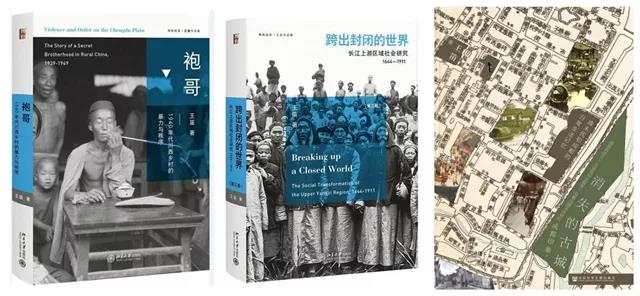 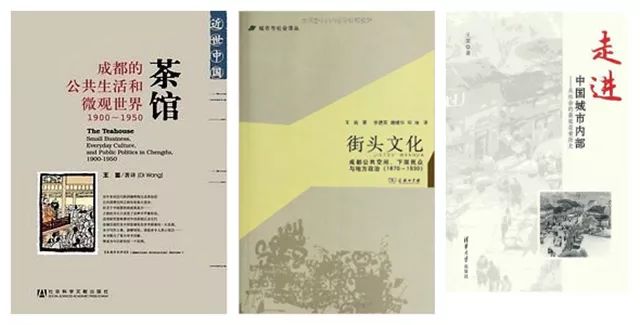 王笛这六本书大约可分为四类: 王笛这六本书大约可分为四类:一类是结合着自己研究心得的理论探讨,或者说将做学问的心得启迪给后学,彰显给同行,披露给读者,如《走进》。不妨说,此书一读,你就容易理解王笛的其他研究了。当然他不是做史学史研究,也不是做历史哲学思考,而是就自己研究所得,阐释其所用方法。 复次,他最早的一本专著《跨出》,正如他的书名所说,“跨出”是学术研究的第一步,“走进”才能拓展进其深。这本书更多是以宏观的、国家的、长时段的、精英视角为主导,涵盖的是长江上游区域社会诸方面,与后来诸多微观研究、地方视角、下层视野、只及成都的某一方面有相当的不同。 第三是王笛最为主体性的研究,也是为学界或者说读书人所了解的《街头》《茶馆》《袍哥》三书。 最后非学术的普及性著作《消失》,这书的最大特点就是把有趣的有故事的注释变成正文。 《街头》等三本书,使得王笛与此前大多数的成都研究区别开来。川菜里不仅流行一鸡多种吃法,即便辣椒,也可有多种做法而成全椒宴的,当然这非掌厨高手莫办,因为雷同使人厌倦。于成都来说,王笛的功力庶几近之。 毋容置疑,成都历史研究存在泥沙俱下的情形。或者说,多数的所谓研究,都只不过转抄稗贩,成为吃饭之具,浪费生命。关于成都历史的研究,无论是通史还是单项研究,大多是传统路子,多半只为圈子内的人知晓。另外一些人如李劼人、流沙河、袁庭栋、岱峻等人的写作和研究,才为大众所熟知。 像王笛这样的专业研究而能逸出小圈子影响的,关于成都历史研究的书籍并不多见。其原因在于王笛的写作不是那种硬绑绑的学术用语与概念横飞,要么是讲故事,要么是勾勒历史细节,在并不影响学术份量的情形下,以使读者有亲和力,发生阅读黏连感,一如史景迁、孔飞力等人的史学写作一样。 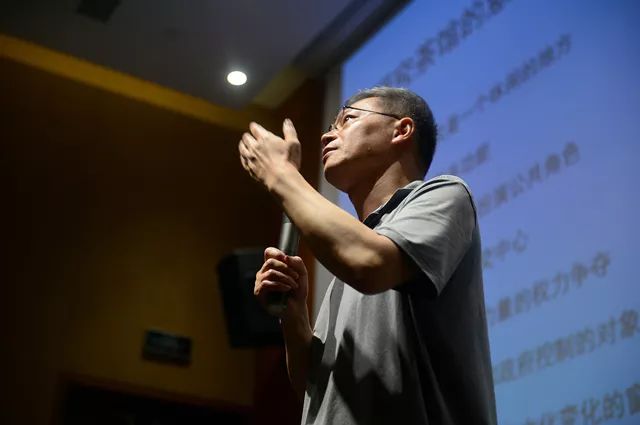 王笛教授 这当然不是说学者们此前对成都的研究都不足道。如美国学者司昆仑的《文明进城中的成都:中国的城市改革(1895—1937)》《巴金<家>中的历史:1920年代的成都社会》,只是与王笛的研究角度有异,但其刷新人们对成都的新认知,是铁定无疑的。 再比如王东杰的《国家与学术的地方互动:四川大学国立化进程(1925—1939)》《国中的“异乡”:近代四川的文化、社会与地方认同》、李德英的《国家法令与民间习惯:民国时期成都平原租佃制度新探》、刘昕杰《民法典如何实现:民国新繁县司法实践中的权利与习惯》等,同时还有《川大史学》卷中“近现代史卷”的部分文章,对加深于成都的认知也是大有助益的。 近阅邱硕《成都形象:表述与变迁》,对成都形象之历史有更多的了解,然若从格尔兹阐释人类学的“地方知识”与国家叙述之张力,以及政治人类学中权力分配的中心与边缘诸角度来看,尚欠过硬的学术着墨。 有人或会问,为什么要花这么大的精力来读这些书呢? 一来自己虽非成都人,但因为在成都生活了三十多年,故对这里发生的一切都有兴趣去了解。二来自己也算是个成都研究者,但自认为与王笛的成都研究相比,有所不及。因为他的方法与视角及深入程度,远超过包括我在内的许多人,自然与他的学术训练有关。虽然他以史学为业,但他其实多用其他学科的方法来包围他的历史研究,也就是说他不是一般意义上的传统文史研究路子。这就使得王笛的研究领域似乎单一狭小——长江上游区域社会、袍哥、成都茶馆、成都街头文化等,但他并非传统意义上的乡邦文献研究者,而是微观史与大视野的结合,正所谓以小见大。 另一方面,他的研究路子,也是传统历史研究颤变的一部分,从原来的重整体研究,到对琐细事物的兴趣;从对确定性的追寻到非确定性的描述,这就像年鉴学派第一代到第三代的变化一样,看上去静悄悄,却有着深刻的内涵变迁。要言之,传统历史研究为何越来越多仰仗其他社会学科如人类学、社会学、经济学、宗教学等,其原因在于单一的史学研究,在面对全球化与纷繁复杂的社会问题时,其解释力明显不够——当然这也不是史学的问题,而是所有学科多向交叉变成了一种范式或时尚,也说明许多单一学科的阐释力明显乏力——如果说以前的成都研究,稍有大而空或者饾饤琐屑之弊,那么王笛的写作便是以小历史和大视野揭示了成都社会生活的纹理。这就像美国社会学家默顿的“中观理论”,是对实证主义和大而无当的宏大叙事的协调一样。 一、研究成都的新方法 关于研究成都的方法与史料,王笛已在各书的序言特别是《走进》一书多有提及,即便没有提及也间或有人论及——如马敏《追寻已逝的街头记忆——王笛<街头文化:成都公共空间、下层民众与地方政治,1870—1930>评述》(姜进、李德英主编《近代中国城市与大众文化》pp.359-391,新星出版社2008版),李金铮《小历史与大历史的对话:王笛<茶馆>之方法论》(《近代史研究》2015年第三期),分别对《街头》和《茶馆》两书进行了比较深入的评述分析——除为论述的方便,必须提及者外,其他尽量简略。我的论述原则,一是与已有的成都研究相比较,二是他人很少论及,或有论及却不那么直接的地方,我则略作申说,以见其角度之新。 1.一等题目与真问题 如果你认真读过王笛的书,如《茶馆》《走进》诸书中的任何一本,你都可以看到王笛在序言里面,老是在为自己做研究的方法与目的,做阐释说明工作,甚至堪称辩护。为何如此呢?因为他的这种新文化史、微观史的研究方法,在中国还没有完全形成理解与阅读上的同行及读者共识。 一是读者的认知与阅读期待,还存在着差异,如《袍哥》一书读者就只以为是个好看的故事。如吃讲茶,读者期待一个好故事,但作者却基于民间(基层)法律分权的考量,及社会控制之官民较力。 复次,与其说史学同行之间对方法、材料、目的之理解有异,还不如说中国传统史学有着很强大的宏大叙事与意识形态动力,经世致用的“资治通鉴”传统,其市场号召力与阅读心理都甚为深广。以至权威的《近代史研究》2012年第四期要辟个专栏来谈“中国近代史研究中的‘碎片化’”,而王笛以《不必担忧“碎片化”》来回应。 王笛对同行的一个经典性回应,是以隐藏了批评者名字的方式来呈现的,那就是著名的“二等题目”。说这是回应并不太准确,因为“二等题目”的提出者并非针对他的研究,而是早已有人提出此说。鉴于提出此问题者在华人圈的名声,王笛认为实在有预为辩护之必要。 他在《茶馆》(p.14)、《走进》(p.16)二书几乎有一段完全相同的文字都提及此问题:“一位我十分钦佩的成就斐然的前辈美国华裔历史学家曾经告诫道:‘千万不要做第二等的题目’,言之下意是要选重要题材才可能成就杰出历史学家,所以他所做选题,都是关于国计民生的大题目。他的这种看法,引起不少国内史家的共鸣。但是我怀疑,是否真的存在所谓‘一等题目’或‘二等题目’。” 王笛没有点名批评的这位著名华裔史学家,是以直率说话、学问自负著称的何炳棣。他深受曾国藩“扎硬寨、打死仗”的影响,认为人生要解决大问题,做学问也要做一等题目。这观点也不是他首创,而是他佩服的科学家林家翘在与他的谈话中说出来的:“要紧的是不管搞哪一行,千万不要作第二等的题目。”(《读史阅史六十年》p.104,广西师大出版社2005年版)科学的特殊性使得科学研究的前沿性、紧迫感、时效性、艰难程度等方面,成为人们选题的重心。 因为科学研究的要义明确是解决问题(不一定是实用的,像数学中的著名猜想,以至数学家哈代认为数学最大的功能就是无用),就使得“一等题目”似乎变得天然重要了。科学研究对“一等题目”的强调,是否能够天然转化到人文社会科学研究中来,不是没有疑问的,因为二者的证实与证伪性之不同,是显而易见的。至于何炳棣甚至延伸为一种“清华精神”,反倒是格局偏小的团伙(母校)精神了。 王笛批评何炳棣的“一等题目”,自然不是为专唱反调而立异以鸣高,而是有史学范式转移的因素在。西方由实证史学到语言及叙述之转向至新文化史、微观史学等已是几十年前的事了,而在中国依旧是宏大叙事、经世致用藩篱左右历史主流,所以王笛才说小的研究乃至所谓的“碎片化”不是太多了,而是还不够。 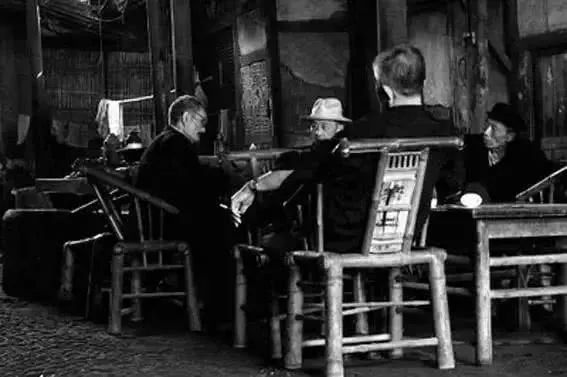 不特如此,现在我们很多史学研究,还囿于传统文史范畴,根本就没有引进相关的社会科学方法,绝大多数的成都研究便是如此。也就是说一些人太担心史学被人类学、社会学、经济学等学科侵蚀了领地,而使史学的界限模糊了,王笛认为这是庸人自扰。这方面研究史学史的学者应该最有发言权,因为这是一门研究历史学问之历史,王笛的朋友、研究史学史颇有建树的王晴佳,在相关论述特别是《新史学讲演录》里,也是支持王笛的看法的。 换言之,在王笛看来,那些研究所谓“一等题目”的人,难免有借书写重大题材,满足自身驾驭历史的野心偏好。这当然是传统中国知识分子以精英自许,甚至以随时献计的策士心态而自得,从而使学问丧失了相对的独立性,亦缺少为学问而学问的求真热诚。 更进一步说,何炳棣研究历史虽运用了一些现代的方法,但他的史观却还是受中国人把历史当宗教的影响,资治及经世传统,使得殷有贞人、周置太史、晋之乘、楚之梼杌、鲁之春秋,对史家的影响几乎成为一种本能。其实这也是因为中国人崇拜权力到了深入骨髓的自然反应,而权力又集中在政治精英特别是上层,他们掌控着资源分配,故帝王起居注、断烂朝报一直是中国历史的主流,一点也不让人觉得奇怪。研究题目自带Power,与权力崇拜有内在的逻辑相关度,也是很多中国历史研究者所热衷的。“学得文武艺,货与帝王家”固然有点难听,但目前据此操作的实践者依然不少。 这当然也不能完全怪中国的研究者,因为几千年素来如此,即便生活在别处也难免不受这种因素的影响。大多数人文研究都是不完全、不确定的归纳性研究,而这样的研究又多半受史观这样的研究前设的影响——没有任何一个人研究历史之前是没有预设的,完全的客观及价值中立只是一个拿来号称的理想,连科学研究中都不能完全摆脱前设——说到底史观又受到世界观、价值观的影响。 王笛不同意何炳棣的说法,在多本书中反复引用布尔代尔的一段话,其用意也在这里:“遗憾的是,我们对那些巍峨的王宫的知识多于卖鱼市场。鲜鱼装在水箱里被运到市场,在那里我们还可以看到大量的狗、野鸡以及山鹑,我们在那里每天都可以有新的发现。”(《街头》p.23) 准此,王笛强调如下观念,自然可谓水到渠成:“研究日常、研究下层,说到底是历史观和方法论的问题。虽然我们的主流意识形态不断强调,‘人民才是创造历史的动力’,但我们的历史研究实际上对这个动力却十分轻视。”(《走进》p.15)塑料花起的是装饰作用,你却非得要去研究它的香味,那当然是得不着的。但“难道我们不认为每天的日常生活,较之突发的政治事件,更贴近我们的命运吗”(p.14)这句话,却值得我们深深回味。不特如此,在王笛看来,以小处着眼而进入大格局,是切实可行的:“研究社会最基本的单位,进入城市内部不会妨碍历史学家考察更宏观和意义重大的事件,反而有助于更深刻地理解这样的问题。”(《茶馆》p.424) 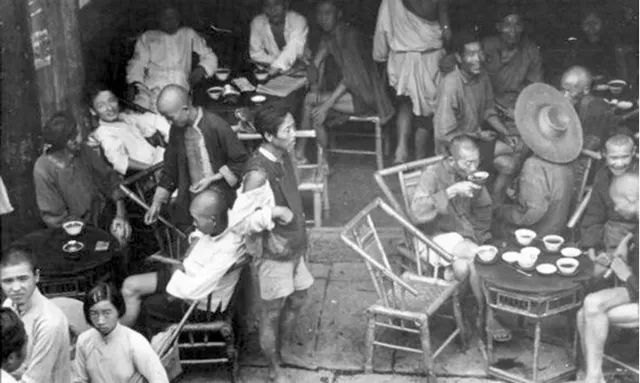 什么是真问题呢?除了人是什么,从哪里来,要到哪里去这样的大哉问以外,不少真问题难道不是由那些鲜活的细节组成的么?“我觉得研究对象本身不存在重要还是不重要的问题,关键还是看研究者是否有一个宏观的视野。这就需要写史者认真思考怎样驾驭那些纷繁的细节,犹如盖房子一样,房子的结构犹书的宗旨和核心,砖瓦便是这本书的细节,如果只有细节,一个建筑是支撑不起来的。”(《走进》p.69) 顺此思路,自然得出如下的结论:“历史的研究价值不是由研究课题本身的重要性来决定的,而在于研究的历史眼光和历史解释,一些貌似平淡无奇的对象,史家却能从中发现认识和理解历史的深刻内涵。史家对什么叫研究价值的理解是很不相同的,这经常是由他们的历史观和方法论所决定。”(《走进》p.71)我以为这是对把研究题目看得比史观及方法论还重要的学者,一个颇有力道的回应。 王笛虽坚持微观史却不乏宏观视野,以下层视角,来观察他曾经生活的城市,对这样的方法论和历史观坚持到何种程度呢?只要看他对自己第一本书《跨出》修订版的前言都知道了。他承认自己受施坚雅模式与布罗代尔总体史的影响,比如他不再视大众信仰为迷信,把带有意识形态的封建主义改为传统社会,他自我批评这本书受文化霸权和话语霸权的精英视角的影响,此后的写作均是对此方面的修正。 这也是对他早期受教于隗赢涛话语研究模式的一种反动,你如果不能动态化地看一个人学术之发展,甚至从标题上或许难以看着是同一个人的作品,如隗赢涛、王笛《西方宗教势力在长江上游地区的拓展》(《历史研究》1991年第三期)。其实这篇文章所用的统计方法与量化研究,与《跨出》一书是完全合拍的,内容不少也包含在该书的第十章“传统文化的危机与现代意识的兴起”里。顺带说一句隗指导的硕士生唐毅《近代四川教案的反思——从区域性教案看近代中西关系》(此论文批注本庋藏在我手中),在史观上同一机杼。这既是大多数近代史研究的必然毛病,也是学生对老师格局投其所好之所致。 2.史学与家乡人类学 研究史学史颇有建树的学者王晴佳说新文化史其实就是因史学与人类学的结合而导致的(《新史学讲演录》p.55,中国人民大学出版社2010版),这就使我们能够明白,王笛为何进入新文化史、微观史的领域,能够如鱼得水。不要忘记他第一本书深受施坚雅的影响,而施的人类学素养,使其在历史地理及行政区划之外,能观察到农村市场的蜂窝状结构与城市宏观区域之划分。王笛跟随罗威廉的学术训练,使其变更了他在国内传统的史学训练,复以社会学、人类学、政治学诸学科的学习,使得他对历史如何写、写给谁看、解决什么样的问题,与此前看法大有不同。 虽然留学前后之研究方法大有不同,但为什么王笛要持续地研究成都却值得申说,因为这是引起读者和同行误解他的主要方面。中国素有生活在什么地方,即对该地方有所措意的学术研究传统,因为实地勘测,经世致用诸方面的视野,都将他们引入此种领域。同时从一个学者参与在地生活来看,研究在地社会诸方面,特别是对外来者既是就地取材,熟悉自己的生存环境,将研究与生活结合起来,亦是习得身份认同的方式。 换言之,这样的学者不仅其研究有温度、接地气,且易破除自己的研究与在地生活形同水和油的关系,有效地融入当地社会。这样的例子很多,如顾颉刚、徐中舒二位抗战前从未入川也未研究过四川,后来到了四川均有相关方面的研究并结集,更不用说那些研究有形有声文化形态的人——建筑、历史地理、考古、方言等——梁思诚、刘致平、董同龢等,既帮助当地人了解自身的文化积累,又使得自己的研究不废且进。 而对本身就是当地的人来研究当地,其优势自不待言。但难除身在庐山之弊,却是众人皆知的短板。但对于长期生活在异质文化且训练有素的学者来说,回望自己曾经居住之地,绝非那种一生身在其中而自划牢笼者可比。这方面前辈研究者中卓有成就的如费孝通、许烺光、林耀华、杨懋春,目前的则有在日华裔学者韩敏《回应革命与改革:皖北李村的社会变迁与延续》、巴战龙《学校教育·地方知识·现代性:一项家乡人类学研究》(此书为少数族裔用汉语乃至外国视角对自己本民族的回望与观察)等。 前四位除了费孝通得到普遍认可外,以研究缅甸克钦社会结构著称的著名人类学家埃德蒙·R.利奇,在其所著《社会人类学》中就曾批评其余三位有先入之见,容易基于个人经验而非公共经验而加以歪曲。因此韩敏说自己在做家乡人类学研究时,利用自己在异域的生活与留学经验,阅读外国学者写的中国民族志,与外国学者一同研究,提高对那些习焉不察之物事的洞察力,并增加客观性,从而解决家乡人类学研究中的先入为主和自蔽现象。(见韩敏《一个家乡人类学者的实践与思考》一文,阮云星、韩敏主编《政治人类学:亚洲田野与书写》pp.260-261,浙江大学出版社2011年版) 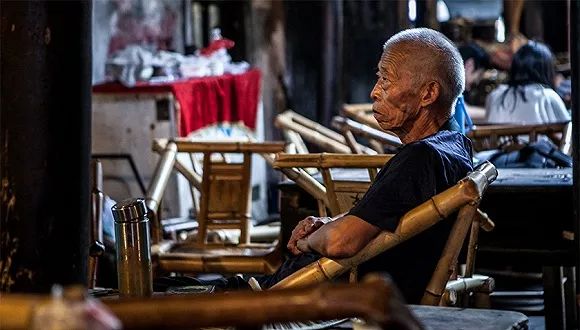 众所周知,人类学的研究发端于自认为的优势文明对于被认为是劣势文明一种从上而下,却又希翼能够深入当地的一种打量与观察。这种观察,后被普遍警醒乃至煽惑的民族主义与国家主义话语视为殖民主义视角,我承认这样的看法有其不可抹去的合理性。但对外来研究的敌视却使蔽于自身的偏见,不容易被发现与指正,更不容易因此改变与吸收。人类学发展到今天,很多研究已经不是对异域文化的猎奇了,而是知识精英对自身文化的打量与反思,这被日本人类学家末成道男称之为家乡人类学,这是中国人类学研究中一个相当突出的特点。 王笛所做的当然是史学研究,但他在弥补文献资料不足的时候,却也做了不少的调查与访谈,这在《街头》《茶馆》《袍哥》三书都有具体的体现。他在《街头》一书曾说其家乡人类学的研究方法:“对中国街头文化进行学术探讨要求运用多学科交叉特别是历史学和人类学的方法。中国文化重视传承,历史和文化的许多细节都是从口头一代传给下一代,我因此能通过采访收集到不少口述史料。从新中国成立后直到改革开放,成都城市和城市生活虽然经历了剧烈的变迁,但我仍能通过在茶馆与老人的谈话,收集陈年的往事;流连在僻静的小巷,探询岁月刻下的痕迹。”(p.14) 此种做法仍与王笛早年措意的布罗代尔的看法如出一辙:“小街小巷可以把我们带回到过去,……即使经济高度发展的今天,那些遗留的物质文明仍诉说着过去。但它们正在我们的眼前消失,虽然十分缓慢,但永远不再是原来的面貌。”(p.2)很不幸的是,中国包括成都很多具有记忆意义的物事,都不再是原来的面貌,而且是闪电般消失得无影无踪。 王笛在《茶馆》和《街头》两本书的鸣谢人物里,都提到了两位“老茶客”老人熊卓云、姜梦弼,一再感谢他们多次接受他的采访,告诉其在茶馆的亲身经历,并且为其联系受访的成都老人,比如1997年6月21日,与姜梦弼一起在悦来茶馆一起受访的余逊老人可能便是他们所介绍。 人们为什么喜欢泡茶馆,原因若不采访当年经历过的老人,只是停留在文献上,不仅说服力不够,且似乎少了生活味。原来人们喜欢上茶馆一个主要原因是喜欢喝鲜开水泡的茶,因为那时燃料很贵、河水也要挑夫担来,更没有如今的保温设施。不特此也,卖热水、熬药、烧肉都成了茶悺能挣钱的方式,也降低了家庭的燃料与挑夫担河水的成本。(《街头》pp.69-70) 你以为他泡茶馆是纯粹的享受,结果还有经济因素的制约所致——当然再穷的人都可以到茶馆喝碗“加班茶”,参见《茶馆》p.90页插图——这就像苏轼的《和子由蚕市》一诗的头两句一样:“蜀人衣食常苦艰,蜀人游乐不知还”,农业社会的娱乐带有“痛快”的双重性质,但是大多是偏义复词,快胜过痛。 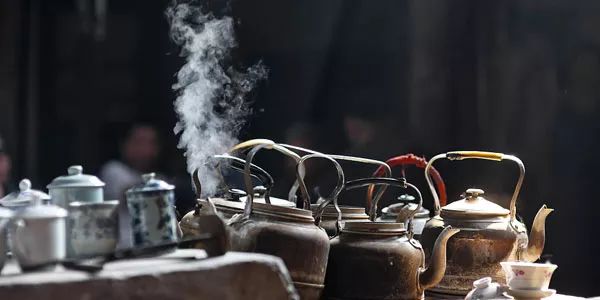 如《袍哥》一书第三章注释五,王笛在悦来茶馆采访七十五岁的周少稷,以便映证李劼人在小说《大波》里所写剃头匠被称为“待诏”,与袍哥不准剃头匠加入的原因。这是用口述与文献(哪怕是小说)参证,使得历史更鲜活,证据更为丰富。同一注释也在《街头》p.346之注三出现,可见要理解王笛对成都的细部开究,要将其各书彼此对看,更能显示他们使用同样的材料,而有不同侧重的能力和用意。即将出版的《茶馆》一书的第二部亦即1950—2000年之间的茶馆变迁,档案、文献等资料相对稀缺,其所做的访谈口述,可能会成为重头史料来使运用,大约远远超过此前诸书。 王笛在为《茶馆》一书的中文版写序时说的一段话,堪称理解他诸多作品的钥词:“西方历史学家喜欢‘打一枪换一个地方’,但我觉得自己更像一个人类学者,对一个地区进行孜孜不倦的长期田野考察。写作《跨出封闭的世界》使我对四川的社会和文化有了宏观的理解,但《街头文化》和本书以成都为中心,这个城市的微观世界令我心醉。我现在正在撰写的关于社会主义时期的茶馆与公共生活,也是以成都为焦点。这三本书可以算是一个中国城市微观史和成都叙事的‘三部曲’吧。”(p.2) 一个人研究自己熟悉甚至喜爱的地方,难免在一定程度上受情感左右,有的甚至充满乡愿,但王笛的研究有效地避免了这一点。有人误以为王笛是为了将过去浪漫化,对此他在《街头》一书的中文版序言做了直接的说明。其实他对成都过去和现在所存在的问题并不回避,不过都秉持着学术上的相对客观,不是写时评更不是编浪漫古装剧。 就一些人于中国文化的过分民族主义态度,特别是深处高度现代社会的美国汉学家于中国过去的迷恋,有一个平和中正的回应:“他们发现中国传统社会中以礼来维系社会成员间朴质的关系、社会共同体的和谐而稳定的局面在现今社会是十分难能可贵的,但当他们在赞美和欣赏中国传统社会的美好的时候,却经常忽视了它内部所存在的阻碍社会进步发展的那些消极因素。因此,怎样看待传统与现代、落后与进步、继承与扬弃这些在大众文化研究中的一系列矛盾仍然是人们值得认真思考的问题。”(《走进》p.130)这正是更为广阔的家乡人类学视野,使得王笛与传统乡邦文献研究者区别开来的深层原因。 二、史料的新开掘和再检讨 一般说来,每座城市都不乏它的研究者,但多半都是属于同一文化内部的自我认知与剖析,其局限是有目共睹的。也就是说,有来自异域的研究者对一座城市的研究,其视角、观点肯定是令人期待的。从这方面来说,沿海的城市,特别是北京、上海的研究者甚多,王笛在他的书中间或都有提及。 特别是上海的外来研究者如贺萧、裴宜理、顾德曼、罗兹·墨菲、魏斐德、韩起澜等,至于华裔学者则有李欧梵、叶凯蒂、卢汉超等,阵容十分强大。相比起来,对成都近现代城市发展着意的外来研究者,恕在下孤陋,只见司昆仑。而留学后返身研究自己熟悉的成都,除王笛而外,似乎也并无他人。 出现这种局面,最为直接的答案就是:这说明成都本身对学者的吸引力不够,不是一等题目。但问题可能比这个回答更复杂,成都作为内陆城市,各方面的开放要比沿海城市晚得多,对于研究城市的近现代化进程来说,尤其不利。 王笛在《街头》与《走进》二书里分享的“寻找格拉汉姆”亦即人类学家葛维汉的故事,很多人因此惊叹于美国对知识产权的保护。这精惊叹是有道理的,但停留于此,就没有理解王笛写此节背后的苦衷。也没有看到成都近现代化之研究为何乏力的一个因由,那就是相对其他城市来说,资料太少,图片就更加稀缺了。为了弥补这样的欠缺,王笛在《街头》《茶悺》二书里甚至使用今人所作的长卷风情画《老成都》,以便使读者的感受有更为直观。 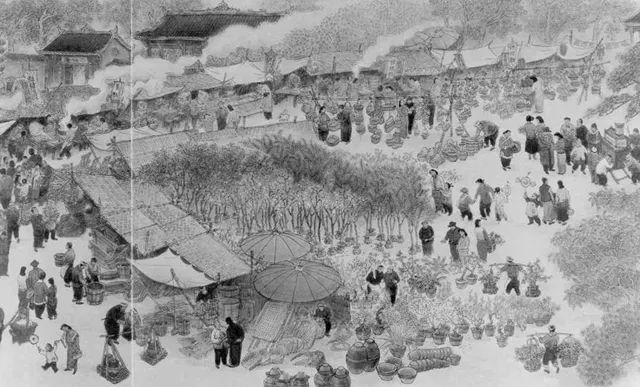 《老成都》局部 1.图片特别是照片 我们从王笛的文字说明及叙述方式中,特别是在他《走进》一书里,看得出他学术研究的转变。但其实还有一点他都甚至搞忘说了的转变,那就是从《跨出》大量的表格与图示(主要是地图)——“原书有统计表250个,有地图以及其他图示32个,新版保留186个统计表和12幅图”(《跨出》一书第三版序)——到其他诸书,除茶馆实际的经营、雇工调查等方面的实际需要,附有24个表格外,大量的图片与少量图示(少量地图),形成鲜明的对照。 表格是计量史学必备,为实证主义所仰仗,也是巨区研究和长时段总体史,所乐意使用的。而图像特别照片与表格相比,感性、直观,具有与文字相生相伴的述说细节的能力,而这正是王笛书里视觉转换背后的史学方法与观念的颤变所致。 在图片的选择与远用上,王笛这些书也有相当值得注意的地方。图像是历史的一部分,这没有人反对,但怎么运用图像来达成对历史的研究和解释,就大有学问了。设计史学者张黎曾说:“图像对于视觉文化与物质文化研究的史学意义毋庸置疑,然而如何从已知的图像文本中还原出动态且复杂的社会网络、审美模型、意识形态与思想蓝本,是每一个以视觉作为切入点的史学家们无法回避的挑战。”(《民国设计文化小史:日常生活与民族主义》p.38,江苏凤凰美术出版社2016年版)英国著名史学家彼得·伯克的《图像证史》与柯律格《明代的图象与视觉性》在在表明图像的史学价值。更何况中国早有左图右史的传统,有时一张图片的说服力,胜过许多文字的力量。 王笛这六本书的插图,可分为照片(含他拍、自拍、翻拍)、地图(含自绘地图)、取自旧书旧杂志插画、今人画卷。这算是全方位地搜索关于成都的视觉图象,但真正的照片依然不多,而且出现时间都是20世纪,没有一张19世纪的照片,虽然《街头》一书的研究时段是1870年至1930年。 一般说来,一个城市早期的照片,多半与外人国人有关,这是照相机的发明、生产、购买、使用、传播决定的。而外国人到中国来使用相机摄影的,又多是老师、探险家、外交人员等,其中最大的一个群体便是传教士,王笛这几本书的图片特别是照片,大多是这些人所提供的。 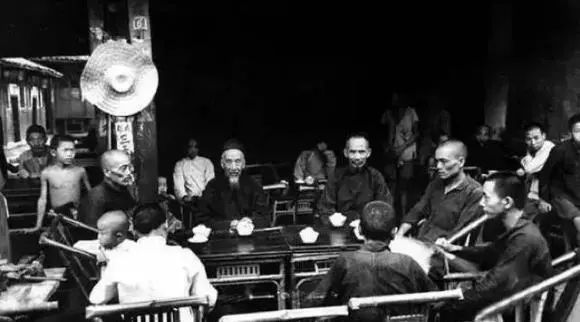 在中国摄影史专家泰瑞·贝内特的三卷本《中国摄影史》里有提到传教士的地方,但没有专门讨论到传教士与摄影的关系,只是在第二卷第二章“北京的摄影活动”中有一小节涉及到医疗传教士德贞。《德贞传:一个英国传教士与晚清医学进代化》的作者高晞囿于其作传的重心,自然也没有提及德贞的《脱影奇观》对中国摄影史的重要性。但高晞在德贞年谱中,明确1855年德贞18岁时作英文书《脱影奇观》,后在1873年译成中文,成为中国摄影史的重要文献。而马运增等著《中国摄影史(1840—1937)》(中国摄影出版社1987年版),只及其为医生,只字不提其医疗传教士的身份,同时自然更不及德贞为废止鸦片所做的终生努力。 在中国摄影史专家泰瑞·贝内特的三卷本《中国摄影史》里有提到传教士的地方,但没有专门讨论到传教士与摄影的关系,只是在第二卷第二章“北京的摄影活动”中有一小节涉及到医疗传教士德贞。《德贞传:一个英国传教士与晚清医学进代化》的作者高晞囿于其作传的重心,自然也没有提及德贞的《脱影奇观》对中国摄影史的重要性。但高晞在德贞年谱中,明确1855年德贞18岁时作英文书《脱影奇观》,后在1873年译成中文,成为中国摄影史的重要文献。而马运增等著《中国摄影史(1840—1937)》(中国摄影出版社1987年版),只及其为医生,只字不提其医疗传教士的身份,同时自然更不及德贞为废止鸦片所做的终生努力。当然近年来所出陈申、徐希晨所著《中国摄影艺术史》(三联书店2011年版)中有几小节少量篇幅稍有提及,如“文化传教”、“《脱影奇观》和编者德贞”、“丁韪良编译的《格物入门》”。而总体上讲,传教士与中国城市的近现代化之关系,特别是从图像上来反映,还相当欠缺。连研究美术与摄影非常出色的学者巫鸿《聚焦:摄影在中国》,也似未注意及此。 不注意这个问题,中国近现代化特别是城市现代化的研究,会出现包括图片在内的史料方面的重大缺陷。以前人们研究传教士,大多从宗教与文化冲突、慈善事业、社会救济、医疗教育入手,但图像中国的历史,更缺不了传教士所拍摄的图片及所贡献的史料。可惜很多人没有意识到这个问题,我读了王笛这六本书深感这个问题的重要性。 《街头》《茶馆》《消失》三书是王笛目前所出六本中文书里,使用图片特别是照片最多的书。《街头》118张(含地图)、《茶馆》95张(含地图)、《消失》183张图片(外加一幅单独的地图)。我对旧书插图、地图、今人画卷都不做统计,那么三书所存照片分别为36张、47张、100张,而其中分别由传教士所拍的为18张、3张、22张。 为何《茶馆》传教士所拍只有三张呢?事实上茶馆一书照拍的主要拍摄者是陈锦和作者本人,都是今人所拍照片。唯一一张1949年前的茶馆照片则为传教士B.布罗克曼所拍(p.160),其珍贵性不言自明。这可能进一步会促成《茶馆》第二部与第一部在照片上的雷同,可期待的是第一部相对较少的访谈。 《街头》与《消失》更涉及日常生活的百态,故传教士的照片收入较多——与茶馆相比,传教士更关注乞丐、弃婴等弱势群体,便于以社会福音切入;同时寺观、算命等也是他们关注的重点,因为福音需要面对这些信仰问题——而且这些照片所拍时间较早。 要言之,收入这几本书里早期成都的照片,除了传教士,就是外籍教师、外交官、地理学家所拍,这样的情形也许在沿海的早期近现代化过程中,恐怕也是大同小异,这绝对是个从图像史、摄影史、中外视觉交流的角度都值得注意的文化现象。 与此同时,就这几本书的图片来看,这里面还包括教育传教士徐维理在《龙骨:一个外国人眼中的“老成都”》一书中所保存的俞子丹绘画,所提供的翻拍图片。同时还有王笛从葛维汉书里翻拍的几张照片,是他费了很大的劲才得到授权的,葛也是个典型的学者传教士。 关于成都城墙除地质学家哈伯德的文字以外,就是传教士陶然士(Torrance)发表在1916年第十号《华西教会新闻》上的《成都城墙的历史》(《街头》p.36之注释),该处除了配外籍教师那爱德在城墙上远眺的照片外,就是传教士吴哲夫(又名吴濬明)的照片——其实有更精美清晰的关于成都城墙的照片,存在加拿大传教士后代手上,如今一直在大邑县新场镇展览存放——图文的搭配非常具有解释力。 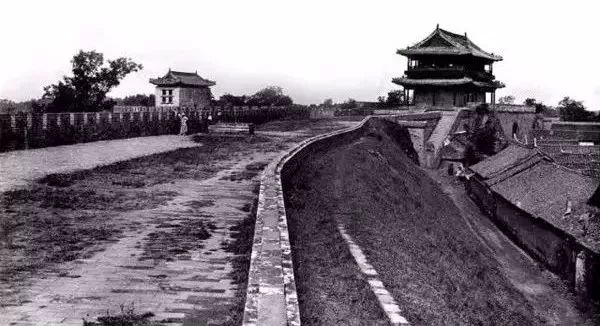 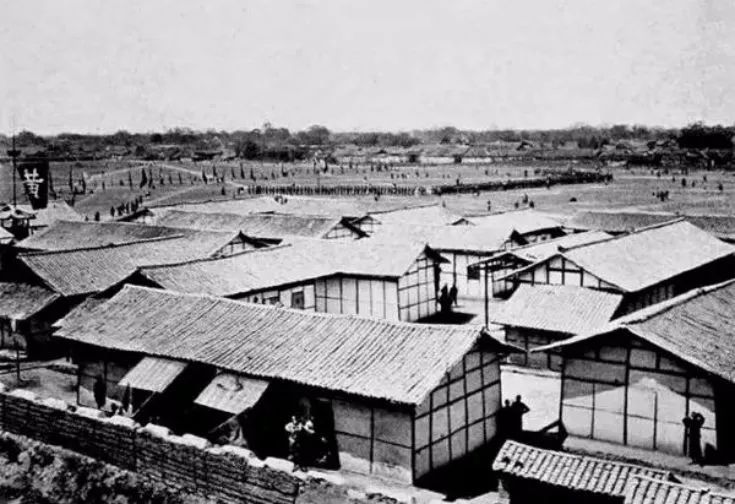 王笛各书使用图片存在着很多雷同,固与论述主题的关联性比较大,也与所述背景均属同一座城市有关,但图片稀缺才是导致如此的主要原因。我记得在一本里,王笛曾提到司昆仑给他提供多伦多方面的信息,从这个方向去找有关成都近现代社会的诸多信息,特别是照片,应该对的。因为成都地区的传教士多是加拿大(那时还属于英国,故有徐维理、陶维新等英国公谊会传教士前来)派来,这样就可以获得更为丰富的成都图像资讯。2012年四川文艺出版社出版了加拿大老照片项目小组编《成都 我的家》一厚册图片集,成都市井百态的照片比较丰富,有一些照片都是此前不曾见过的,比如东、西御街高大的牌坊。 再者,《消失》一书之所以成为王笛所出书中图片特别是照片最多的书,除了作为一本普及读物的传播需要外,还有两个来源使此前不曾出现过的相关照片巨增。一是来源于传教士、社会学家甘博,二是美国《生活》杂志著名摄影师麦登斯。因为二者的照片如今都能在网络上公开找到,并且没有使用限制。 甘博游历中国达十七个省市,摄影照片达数千张,已结集《甘博摄影集》十五卷。他在游历四川包括成都时曾与乡村教育专家傅葆琛合作过,他的成果包括《北京的社会调查》等五部调查集。麦登斯则于1941年代表《生活》杂志来中国拍摄采访几个月,其中有一个便是1941年11月24日发表的八个页码的“龙泉驿专题”——《小场镇使中国不可战胜》。据龙泉驿档案馆的胡开全专文《1941年美国<生活>周刊》中“龙泉驿专题”的当代解读》(《文史杂志》2017年第二期)提及,完成此一专题,是官方介绍、家族支持、基督徒帮助合力的结果。  由照片之遗收,顺带说一点史料遗漏问题。我前面说过,王笛在史料上有竭泽而渔的心志,但真要做到却不是件容易的事。比如王笛在写《街头》《茶馆》二书时,运用不少私人记录,但他也漏掉了如下可资利用的史料来源。 如王闿运《湘绮楼日记》,他在尊经书院当了八年的山长,其间关乎巴蜀以及成都的一些史料可以利用。日本学者竹添进一郎的旅行日记《栈云峡雨》,记载了1876年从北京到成都的见闻,买书喝茶会友,包括对街道的描述,都是值得注意的。1901年至1920年日本建筑大师伊东忠太到中国进行了六次实地建筑考察,其中1902年在成都考察停留了八天,其对成都建筑型制、街道乃至厕所的描述,都算值得留意的史料。 在我看来,虽然史料难收,但集腋成裘总是个能利用的好办法。 2.竹枝词和民间文学 王笛认为,“在研究地方史时,我们一般有四类资料可资利用,即官方文本、大众传媒、调查统计以及私人记录。”(《街头》p.8)对此《街头》一书的译者李德英有所补充:“这个判断大致包括了地方史研究中的重要资料,但笔者认为民间契约及资料(如账簿、族谱、碑刻、民间歌谣、传说等)也是非常重要的资料。”(裴宜理等主编《什么是最好的历史学》p.33,浙江大学出版社2015年版) 我想王笛不会反对李德英这个补充,因为民间故事很多时候虽是传说,但它是社会心态和习俗传播的好材料,竹枝词的写作更多与彼时的民情风俗和日常生活有关,自有其不可小看的史料价值。否则王笛不会着意在这方面加以使用,只是他没有在排比论列分类时,像李德英这样明确地表达出来。 这样的史料价值是怎么产生的呢?因为文学的真实与具体铁定发生某事的真实是不同的。文学的真实存在或然性,某事未必铁定发生过,但从心态史、社会民情以及人们生活的内在逻辑演进,也真实地反映了那个时代的思想、情感变迁。 《茶馆》与《街头》里面引用小说,事涉李劼人、巴金、沙汀诸人,其所写的都是那个时代一种思想潮流、社会风向的一种反应,虽然他们只是通过人物的内在行动逻辑及角色演进,来展现的。比如《街头》一书使用李劼人的小说来证明里正、街正如何在社会动荡时,组织民众完成“市民的自卫”,从地方史料中,似乎尚未找到相应的记载性史料,但它的真实性不会因此被否认。 当然这涉及如何处理文学作品中所包含的史学因素和社会判断。竹枝词当然不是四川或者成都才有,但像王笛这样用社会学、史学的方式来解读,并不多见,这可以看出他的眼光,以及对历史的理解能力,和中国传统的史学理解有异。当然如果推得足够远,《诗经》并非为文学而文学的作品,所以才有流沙河“诗经现场”一样的解读。 同样的,《史记》中文学描写的真实性,如“项羽本纪”中的“鸿门宴”历来被认为细节过于真实到一个地步,以致于有人认为司马迁完全在杜撰,因为他不是亲历者。其实这在创造项、刘诸人的个性上,实在是有相当大的帮助,一个人的胜利与失败,固有时也、势也诸因素的综合作用,但有时还因一些不为人知的细节与个性,而决定胜败,这是那些不能欣赏历史偶然性的人——当然人类历史的最终走向那是另一回事——所不能体会其魅力的。 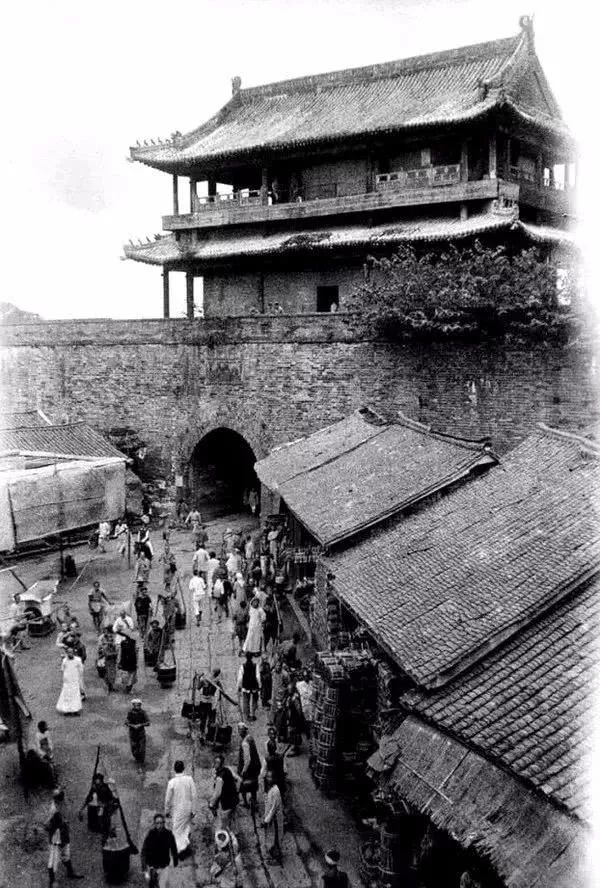 王笛的朋友、同样研究成都很出色的司昆仑,给王笛提供的《通俗日报》和《国民公报》微缩胶卷,给其研究予以了方便(《街头》p.26)。事实上,他从这方面的获益使得他的《街头》《茶馆》《消失》诸书增色。但竹枝词和民间故事的使用,却使王笛的研究在某种意义上具有一种此前成都研究不曾具有的排它性,这就是《街头》《茶馆》《消失》诸书的特殊性之所在。 王笛的朋友、同样研究成都很出色的司昆仑,给王笛提供的《通俗日报》和《国民公报》微缩胶卷,给其研究予以了方便(《街头》p.26)。事实上,他从这方面的获益使得他的《街头》《茶馆》《消失》诸书增色。但竹枝词和民间故事的使用,却使王笛的研究在某种意义上具有一种此前成都研究不曾具有的排它性,这就是《街头》《茶馆》《消失》诸书的特殊性之所在。虽然王笛对成都竹枝词的利用远未有达更为细腻穷尽的地步,因为他使用的林孔翼的《成都竹枝词》一书,而不是冯广宏、杨尚孔主编的《竹枝成都:本土文化的经典记忆》,此书收关于成都的竹枝词2071首。但即便如此,他使用非史学性材料的做法,也为成都研究者带来了一种启迪。 既如此,这就促使我们回过头看王笛《茶馆》的开头与结尾,按传统中国学术的写法,这真是赘笔冗词。但问题在于,他这样的开头与结尾,使我们在更为真实、更为宏阔的视野上,来看待在剧烈的制度改易和社会变迁下,一个人的生活方式的抗压和适应能力到底有多大。即习惯能在多大程度上,对那些人为的外在挤压,无论是制度(经济、政治)上还是宣传(意识形态教化、倡导新生活方式)上的形塑,带来时间与空间的留存状态。让我们在思考国家与地方,精英与底层,剧变与风俗之间远比人们所看到的更为复杂的面相,从而在议论诸事时不要存有一种讨巧的、非此即彼的二元判断。 3.对《华西教会新闻》的使用 我要强调一个看法,研究中国城市近现代化进程,不研究传教士在其间的作用,其缺陷是显而易见的。中国的近现化过程,无论是城市建设、医疗卫生、教育文化,还是慈善救济、社会团体、道德重建诸方面,都不能不提到他们在其间的贡献。 鉴于《华西教会新闻》对川(含重庆)、藏、贵、云诸省区持续45年(1899—1943)的报道与记录,对《华西教会新闻》进行比较深入的研究,于了解这些地区近现代历史,自然是重要的——与《华西教会新闻》相比,天主教川东主教区1904年所办的中法文两种版本《崇实报》,研究的人可能更少——关于《华西教会新闻》的使用与研究,虽然还有不少地方有待探索,但学者的发掘,从上个世纪开始,特别是本世纪初开始,还是有了一些的成果。 对于2009年以前的成果,张伊、周蜀蓉《<华西教会新闻>研究综述》(《宗教学研究》2009年第一期),谈得比较清晰。自此以后的成果,以我所见的论文,白晓云《传教士对中国西南宗教和民间信仰的考察——以<华西教会新闻>为中心》(《宗教学研究》2012年第二期)、白晓云、陈建明《<华西教会新闻>办刊宗旨的演变与四川基督教的本色化》(《世界宗教研究》2013年第三期)、惠凤萍《<华西教会新闻>对清末重庆的多维呈现》(西南政法大学2018年硕士论文)、张宝宝《清末民初基督教新教传教士与四川社会——以<华西教会新闻>为中心》(上海师大2018年硕士学位论文)、朱娅玲《西方传教士笔下的东部藏区图景研究:以<华西教会新闻>(1899—1943)涉藏记叙为中心》(四川大学2018年博士论文)。论著中较多涉及到《华西教会新闻》则是陈建明的《近代基督教在华西地区文字事工研究》(巴蜀书社2013年版)。 总体说来,《华西教会新闻》在2013年后有越来越多的人来加以研究,其原因殆出于资料相对易于搜寻了,因为国家图书出版社2013年影印出版了三十二册的《华西教会新闻》,这对新闻、区域、宗教诸方面的研究,都会带来极大的便利。 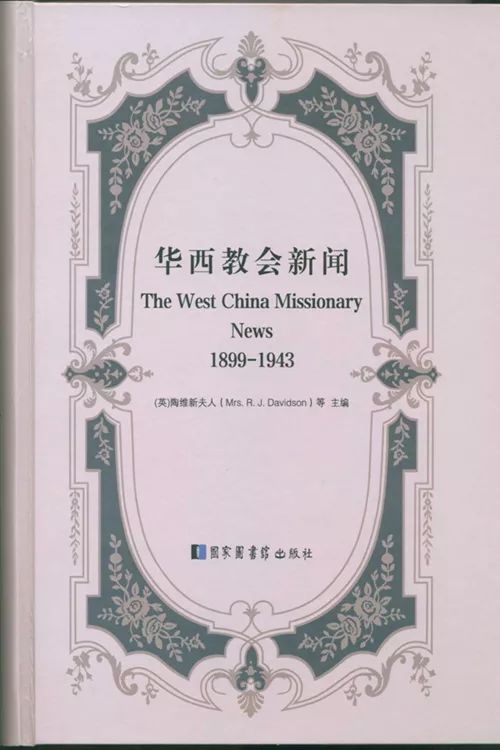 既然前面有那么多人利用与述及《华西教会新闻》,王笛使用此资料的特殊性在什么地方呢?王笛对《华西教会新闻》的注意应该始于20世纪80年代,他师从隗赢涛读研究生时,因为隗赢涛应该算是1949年后较早使用《华西教会新闻》来研究四川近现代史特别是保路运动史的先驱。这样的资料收集与分析及学术视野,不能不影响及王笛对此刊的注意。 事实上,他在《跨出》一书里论述保路运动时,就引用了除《华西教会新闻》外,它处不可太可能得知的地方精英齐动员的一个惊人事实,“另据《华西教会新闻》报道,在德阳,由‘成都派出的代表来到本县,开出一长串加入同志会的名单,其中差不多每个稍有地位的人都入了会’”(《跨出》p.301),这对分析彼时社会趋势,以及政治博弈,都是相当有帮助的。 王笛在《街头》英文版自序里特别提到了司昆仑在资料上于他的帮助,将搜集的《通俗日报》和《国民公报》部分胶卷予他使用(《街头》p.26)。此书译者之一李德英在“译后记”中说:“王笛在收集资料上下了很大的工夫,他使用的几种主要资料《国民公报》《通俗日报》《通俗画报》和《华西教会新闻》,是研究这段时期社会经济文化的重要报刊资料,但这些资料过去的学者却很少运用。”(《街头》p.402) 2005年李德英说这话时,《华西教会新闻》的确还很少被人使用,所以当《街头》一书引《华西教会新闻》多达七十三处的时候(见张伊、周蜀蓉文),就不能不引起人们的注意。因为《街头》一书涉及社会改良、政权更迭、城市空间争夺等,而这些在《华西教会新闻》中多所记载,故出现频率较高。而《消失》一书作为《街头》和《茶馆》二书的普及版,《华西教会新闻》出现频率稍次,而《茶馆》最少。这和传教士所拍摄的照片,被王笛使用的频次是完全合拍的。 城市里的乞丐、流浪汉、城市卫生、街头的整治等方面,周孝怀从日本考察回来的“娼、场、厂、唱”的改良,这些都与传教士生活的环境,息息相关,故此《华西教会新闻》里反应得不少。 如关于乞丐的史料,在《华西教会新闻》里多次出现——传教士何忠义和裴焕章都写有相应的文章——与彼时在《国民公报》和《通俗画报》的偶尔报道,加上传教士所摄图片,构成了王笛研究的整体图景。裴焕章在《华西教会新闻》里提到乡村、街道特别是茶馆里散发圣书,说明他们对茶馆于四川特别是对成都的重要性,是有具体感知的。 事实上,研究城市近现代化,《华西教会新闻》从王笛的著述与司昆仑《文明进城中的成都:中国的城市改革(1895—1937)》《巴金<家>中的历史:1920年代的成都社会》中,多所运用。而且后出之惠凤萍《<华西教会新闻>对清末重庆的多维呈现》(西南政法大学2018年硕士论文)、张宝宝《清末民初基督教新教传教士与四川社会——以<华西教会新闻>为中心》(上海师大2018年硕士学位论文),也多论及里面关于成渝两地城市的内容。  这说明《华西教会新闻》作为解释成渝两地近现代进程的解释力,有其他资料不可替代的作用。材料的使用与处理,背后所蕴含的是史学观念的改变与研究视野的调整。就像司昆仑的《巴金<家>中的历史:1920年代的成都社会》书里,常用彼时美领馆提及中国的函件,这一点几乎不为国内研究者所注意——王笛也不曾措意及此——这说明材料的扩大,对重构历史,有着相当重要的作用。从这个意义上讲,像傅斯年一样强调史学就是史料学,不是没有道理的。 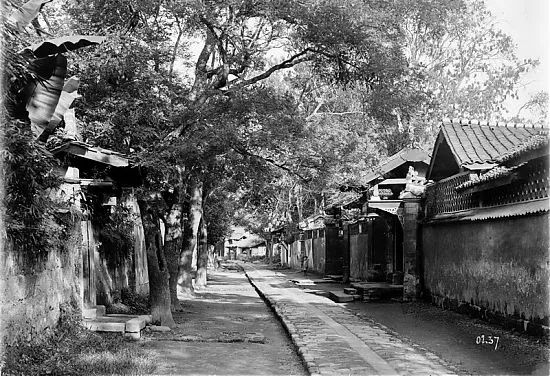 三、官方与民间的角力:街道命名的记忆 王笛说“小时候居住的大院,前面是布后街和脚板街”(《消失》pp.4-5),实是爵版街之误。张岱《夜航船》卷三《脱雅调》称街道之命之,如“由斯弄俗称牛屎弄”,为“脱雅调”,被钱锺书批评为“脱俗调”,完全是本末倒置(《钱锺书手稿集:容安馆札记》201则,商务印书馆2003年版)。钱认为先俗后雅是最街名的一个常态,求雅愈俗,他举“臭屄胡同”改成“受璧胡同”,如同将“文学家”改作“文学工作者”。我承认钱的说法的确更普遍,很有道理,但爵版街的确更像张岱所说,应该是文人据实情所取而得,而一般人不明白,故喊成“脚板街”。 爵版街到底怎么来的呢?其实王笛在《跨出》一书中讲清朝的“行政统治结构”时,说到布政司提到属员三,一为布政司经历,二为藩库管理,三为布政司磨照(p.283),都与布政使署相连,而成了成都的街名。经历司街其实就是今天的华兴东街,未修红星路之前,与藩库街连在一块的,而爵版街则又是与藩库街连在一起的。 这说明王笛不是不知道爵版街的来历,其得名乃由照磨厅之“照稿磨勘”而来。官员的藉里、郡望刊刻与核实,士子的与人交往,都需要在此刻印,从某种意义上讲,此街成了清朝“名刺(片)一条街”。 为何会形成这样一条街呢?我曾在拙著《从历史的偏旁进入成都》新版的序言《一座城市的社会学生长》(中国发展出版社2015年版)里对此有比较多的分析,这里简略谈谈。爵版街附近全是与此街道形成的互生业态,除了刚才说的布政使署衙门外,尚有不远处的督院街(总督府)、提督街(提督衙门),彼时交通不便,衙门集中,易于办公而降低人力成本。与此同时,科甲巷、书院街(此两条街道为赶考的聚集、食宿之地)等街道,以及字库(惜字宫街)等都在其旁边,形成一条以印制名刺,满足官、学、商等人的商业服务街道,一点都不令人感到意外。 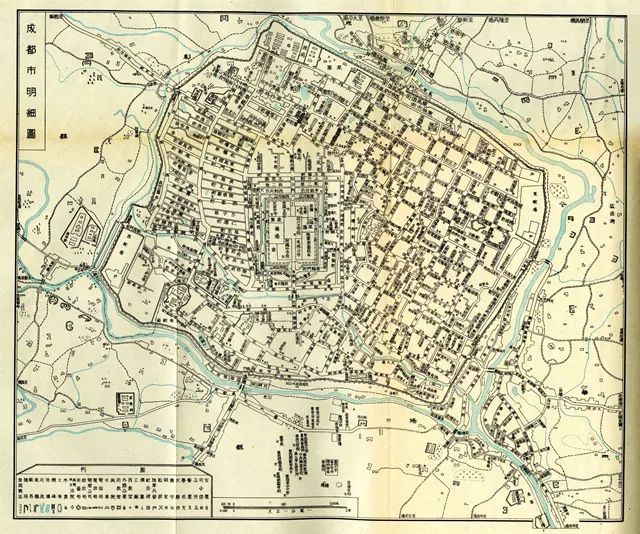 20世纪初成都地图 旧时街道的形成,街道的命名,与今天强调人为规划的处理方式,大有不同。街道形成和街道命名的原则,就是依据生活本身的样态来解决的。街道处于互生状态,形成了一定意义上的产业链。如棉花街附近是纱帽街,糠市街旁边是磨坊街。 也就是说,从某种程度上讲,你甚至从这条街推出下一条的业态和街道名字,这就是我所说的哈耶克意义上的自发秩序生长。当然这并不是说,街道的形成和街道命名一点人为的痕迹都没有。 直言之,许多街道的名字如盐市口、牛市口、棉花街等你不可能得出具体的命名人与命名机构,同时商业业态在近现代城市规划兴起以前,就像集市、市场等依据交通诸方面的考量,自发形成一样,那么街道的命名及其实体成形,也大致如此。 我还没有完整读过司昆仑的《文明进城中的成都:中国的城市改革(1895—1937)》一书,也没看到她写杨森在成都“新政”的专文。如果她只是从进步的角度,或者精英的角度来论述的话,大约会漏掉我下面的角度,而这个角度在王笛《街头》一书中也基本上没有论及。 从周善培开始的城市改良,到杨森的更为发力的城市建设与道路改造,当然是控制利益分配,用权力干预民众生活的一种做法。道路的宽敞及多层建筑,作为一种物质空间展示,是宣示其力量的最佳方式。 可以这样说,1925年春熙路的建成可视为权力大举进入成都城市及民众生活的标志性事件。春熙路无论是取自老子《道德经》二十章的“众人熙熙,如享太牢,如登春台”还是取自“春台戏”,都不是原来意义上的自发生长。虽然我们不知道命名者为谁,名字也取得好,但我们知道这背后权力的直接作用。  街道命名与街道的成形,既展示空间政治,也表达时间政治。空间政治就是街道的布局、业态、建筑、行道树、集市、公园等,而时间政治就是街道名称所蕴含的代代相传的群体记忆和历史脉络。但空间的表达却必须用命名来规限和确定它的边界,这种使得地名不只是时间留存功能,而且是空间布局不可缺少的一部分。 街道命名与街道的成形,既展示空间政治,也表达时间政治。空间政治就是街道的布局、业态、建筑、行道树、集市、公园等,而时间政治就是街道名称所蕴含的代代相传的群体记忆和历史脉络。但空间的表达却必须用命名来规限和确定它的边界,这种使得地名不只是时间留存功能,而且是空间布局不可缺少的一部分。也就是说,街名绝对不是可有可无的东西,研究城市历史格局及规划,以及街头文化,不及此点,肯定是一个缺陷。而这一点大约没有引起王笛的注意,因为命名本身既是一种权力,也是一种广义上的“创作”,是人为之权利的一种体现。 地名的命名是一种直接的街头权力争夺,这当然也是街头文化的一部分,谁命名谁就对它有一种宣示性与占有感。在1949年前,包括成都在内的中国城市命名多是地方(知识)精英与民众习惯的互相妥协,以及事后追认命名的自治。羊市街、牛市口、盐市口的命名很大程度上是习惯成自然,是一种无名氏的命名。而爵版街、黉门街等,一定是知识精英依据当时街道业已成型的业态、附近的机构(黉门街之取名应与附近的四川国学院有关)。1949年前成都的街名和公共空间命名,除了中山公园、中正公园(少城公园在1946年至1949年底前曾短暂得此名)外,很少是官方直接命名的。如果要纳入王笛的《街头文化》一书来论述的话,是可以列入“控制”与“政治”二章来论列的,可惜不只是王笛,很多人都还没注意到街道之命名的政治学意义。 虽然如此,不是没有敏锐的学者注意及此,历史学者陈蕴茜是研究城市近现代化进程中空间政治和时间政治之交叉作用与影响,最为突出的一位。她所著的《崇拜与记忆:孙中山符号的建构与传播》(南京大学出版社2009年版)一书,是从历史学、传播学、政治学、社会学、心理学来研究孙中山这个著名人物出色的著作。这种从崇拜、记忆、仪式、建筑、街道、纪念日诸方面全方位研究一位人物被神化,与在民众记忆中逐渐膨胀的过程,实在是理解中国向近现代化转型的一把钥匙。 其中第八章的《中山符号日常化与空间重组》非常精到的分析了街道命名与城市记忆的政治内涵。她统计出全国各地有中山路(街、巷)的城镇548个,形成了一个巨大的空间符号系统,来左右人们对城市的记忆和认知。有的城市如南京等更是有一个以中山之名为中心的道路系统、纪念建筑(陵寝、碑等)群等城市空间和记忆符号,从而使得人物的研究与街道命名微妙而深入的意涵得以彰显。 陈蕴茜因此得出一个结论:“在传统中国,纪念著名人物的地名极多,但由于国家权力无法直接进入基层社会,因此,据笔者对全国各地地方志的考察,没有发现由国家统一命名的道路。现代国家兴起之后,国家权力逐步进入城乡社会,官方遂直接掌控了对全国地名统一命名的权力。”(《崇拜与记忆》p.412)  四、茶馆与袍哥:权力的社会关系网 茶馆之于成都的重要性,在这两个世纪内得以彰显出来,与城市商业开放、人口聚集等有很大的关联,《街头》与《茶馆》二书比较立体地展示了这一点。但如果你注意王笛自己所绘的一些图示(《街头》地图三、四,《茶馆》地图四),你就知道其论述的空间半径,集中在大约方圆四、五公里的范围内。 尤其是《茶馆》一书中经常提到的29家茶馆,其密集程度之高,超过人们的想像。绝大部分集中在春熙路与东大街一带,少数几家在少城公园及其附近。这些茶馆聚集之地,也是街市繁荣之地,体现了成都城市的生活地理与空间使用。除此之外,以今天的眼光来看,说明彼时成都城市之小,其辐射能力有限。 无论是《茶馆》,或是《街头》,还是《袍哥》,若从政治学的角度来看,无非是群体资源再分配——政治与生活过程的信息获得与传播、组织架构及习惯、文化认同与偏好、地理生态优势与瓶颈冲突的一个结果。 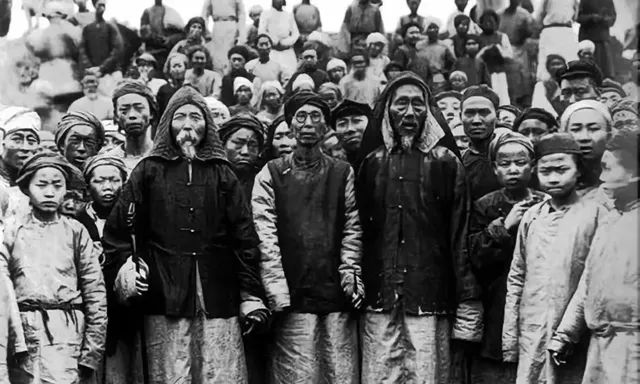 民国四川的情形稍有特殊,1935年前,四川省根本就没有统一,是军阀混战的防区制。军阀混战的因素很多,军人嗨袍哥未必就不是一大因素。这样一来整个社会的管控中,袍哥势力之大便可以想见。 民国四川的情形稍有特殊,1935年前,四川省根本就没有统一,是军阀混战的防区制。军阀混战的因素很多,军人嗨袍哥未必就不是一大因素。这样一来整个社会的管控中,袍哥势力之大便可以想见。民国沿袭以前的保甲制度,其控制力有限,这一点社会学家杨懋春在《一个中国村庄——山东台头》中就说民众不买保甲制度的账,在基层政治秩序中起主导作用的是地方宗族和其他精英势力(p.177,江苏人民出版社2001年版),而四川最明显的就是把宗族势力和地方精英袍哥化了。 说袍哥化也许言重了,但说在主流的社会组织运营构架之外,还嵌入了袍哥这一组织形态,共同参与社会利益的分配,权力的争夺,人群身份认同等,这应该是说得过去的。因为一个运营良好的社会,除了垂直构架的组织体系(官方构架多如此,且多是科层制)外,还要有水平面向的组织架构(多是非官方的、互不隶属且多是竞争的公民自治组织)与其互动合作、制约权衡。若社会制度良好,各方面的运行自然大都是公开的。若垂直架构的权力非常集中,则水平面组织架构则全无空间。 中国文化一直没有办法解决社会生活中跨越熟人,进入陌生人社会的信任问题。社会学者郑也夫曾说中国人彼此的信任度至今没有办法超越家庭,其实这是祖先与血缘崇拜的必然结果。这在一个聚族而居、流动不多的熟人社会,是一种有用的应对方式,但一旦进入陌生人的工商世界乃至全球化,其应对就左支右绌了。 袍哥这些组织的存在,是除了想从没有完全统死的权力那里分一杯羹外,也是一种对血缘延伸的拟亲制组织。也是人群扩大交往圈,需要与陌生人共同行动,维护自身利之必须。不是亲兄弟,没有血缘关系,就用歃血为盟,来完成对非血缘的血缘性建构,从而形成一个有势力的抗衡性群体。 原则上传统社会并不倾向于给乡村社会自治,而是他们力有未逮的无奈之举。即不要把乡村自治美化成一种统治者乐观其成的行为,这样看就难免被人性的幽暗所欺侮而不自知。事实上传统乡村有它的稳定性,除了血缘、宗法、家族等身份、地缘、经济、文化(方言、信仰等)共同体外,还最重要的是那些退休而终老林下的官员,对乡村与朝廷之间的联结关系。退休官员,他在朝廷中栽植的人物,培养的学生,以及他提携的同族同乡,都会使他们形成一种坚固的利益与价值共同体。 我的意思是说,那些对乡村与城市自治的解释,都停留于保甲制度的连坐性,以及在诸多隐形与显性利益上的共进退上,其实底层自治,是整个中央集权制权力金字塔的倒影。这种次生与派驻性权力,依然为皇权所支撑。这种自治不是私有财产完全受保护,法治健全,暴力非垄断而呈理性竞争情形下的真正自治,只是一种自治的表象。这种表象性的自治,想要摧毁起来,也就非常容易。 五、注释变成了正文 王笛的六本书有个共同的特点是都算大部头,均达三百页以上。但《消失》一书与其他五本书有一个明显的不同,就是没有注释,因为它是一本普及读物。如果这么简单就没有说的不必要,因为这仿佛是对安东尼·格拉夫敦的《脚注趣事》一书开了个玩笑。 格拉夫敦写了那么多关于注释的趣事,以我的记忆,好像还没有说到一本将自己所著之书的脚注变成正文,而成为一本书的,那么王笛的写作为他增添了再版的契机。一言以蔽之,《消失》是《茶馆》与《街头》二书注释的一种通俗性重构,这样的发现让人乐不可支。 凡是仔细读过王笛其他五本带注释的学术著作的人,大约不能不惊叹其注释之多之细,来源之清晰,到了巨细靡遗、竭泽而渔的地步。我虽不是学界中人,但特别爱读书的注释。因为注释不仅给出史料与观点来源,更能窥看到作者的研究思路,若你读得细心,甚至可以在作者的思路及架构之上结出另外的研究成果。 王笛对史料收集与使用堪称竭泽而鱼的举措,小举两例以概其余。一是对成都厕所之多,除了市政年鉴,及各种谈茶馆的著述或结集外,还特别引了王旭峰的《茶人三部曲》中关于成都厕所对话(《茶馆》第五章第55注,pp.242-243)。其次是《袍哥》一书第三章第一个注释,可以认作是研究袍哥的比较备的书单(文章)索引,他得出一个你以前不曾注意到的结论:“但是,目前还没有任何对袍哥进行深入研究的英文专著出版。”(pp.278-280)看好的学术著述注释不仅是一种享受,而且藉此得知此领域的来龙去脉及相应的研究进展,如果你有意涉足,这当然是相当方便的“门票”。 在《小商小贩的自由世界》一文里,王笛用细节向我们展示20世纪前官方很少控制集市、市场和小贩及店铺。他引吴好山的一首竹枝词“布政衙前全扯谎,人山人海是江湖”,布政使署是总督府下面的三司之一,属于官府重地禁地。但你看人们在布政衙前的作派,和北京天桥耍把式的江湖人完全一样。 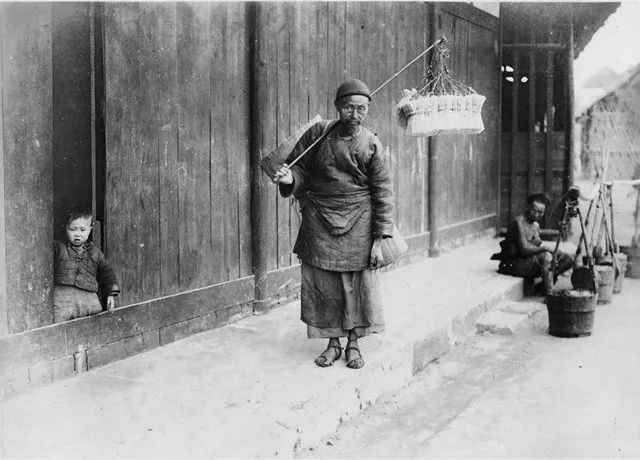 更加出格的是,王笛在《赵尔巽档案》里看到1909年赵在四川当总督时,某两天里,就有20个商家到他家去推销十多种商品,全涉及日常生活用品。“可见那个时候总督大人的私宅也并不那么戒备森严。”(《消失》pp.50-51)而这一段几乎全文来自《街头》一书p.57第二注。 不过,这注里有一小细节被拿掉了,那些到总督私宅推销商品的人,大部分都“未入即出”(赵宅可见《消失》pp.190-191之间第七张图片)。一如1928年一群乞丐去给川军一个师长祝寿(《消失》p.65),以便讨食,在今天再敢奇思异想的小说家,也会被认为是在瞎编。 传教士是真正观察自己所在城市的人,因为他来异乡是为了传福音,必须要尽量了解更多的事情特别是穷人,因为让穷人有福音可听是《圣经》的教导。自然对乞丐的观察和了解、救济就进入了他们的视野,《街头》pp.294-295里的注释三,就是传教士裴焕章发表在1907年四期《华西教会新闻》的一篇文章《成都的乞丐生活》,这是一段苦力如何沦为乞丐的译文,在《消失》p.53变成作者稍作改写的正文。这说明苦力与乞丐只有一步之遥,其生活的苦况可想而知。 至于保路运动事发,人们盼望各地同志军入城,于是谣言四起,没有比一位传教士在《华西教会新闻》1911年11号写的“他们来了!他们来了!”更传神的,此为《街头》p.325之第三注释,变成《消失》一书pp.314-315之正文。这些注释转换成正文,其实就是故事成为主角,使得《消失》一书不受学术著作的限制,而可读性大为增加。 当然即便如此,注释里的精彩故事如一个黄包车夫聚集百余名少年组织“棒棒会”,参加者每人出五元钱购匕首,以便“革命”,还是没能纳入进《消失》一书之“下层民众的革命”一章,因为这内容不关乎保路运动,而是1914年6月《国民公报》上的“新闻”(见《街头》p.356注一)。 当然也有删繁就简的改写,将故事性更为突显出来,以便《消失》的读者看着不累。如《街头》pp.288-293“轿夫和他们的日常抵抗”就与《消失》里的“城市底层穷人与‘弱者的反抗’”大同小异,差别是后者没有注释。 王笛写到轿夫他们抬轿时所使用的独特语言,如孩子挡道了,必须避开,前面便告诉后面的“地下娃娃叫”,后面就说“请他妈来抱”;如遇水潭,前者说“天上明晃晃”,后者则应“地下水凼凼”,等等。这并非彼时轿夫才有的切口。其历史可能久远到像远古打夯,喊“杭唷杭唷”的口号以统一步调一样。四川的交通不便,使得轿夫与揹夫,都是相当古老的下力职业。 与以上轿夫切口相比,南宋文学家魏了翁曾有《出剑门后日履危径戏集轿兵方言》一诗着了先鞭:“篮舆陟险隘,兀兀不停辙。主人眩头目,仆夫困唇舌。前疑树梢拂,后虑崖石擦。方呼左畔跷,复叫右竿捺。避碍牢挂肘,冲泥轻下脚。或荆棘兜挂,或屋檐拐抹。或踏高直上,或照下稳踏。斯须有不审,偾舆在目睫。深渊因可畏,平地尤险绝。作诗告仆夫,审诸秋毫末。识察既晓然,力行谨无忽。” 比如对改良者的态度,王笛在《街头》《茶馆》《消失》里是互相勾连的。《茶馆》里说:“这些改良者推动了许多以西方和日本为范本的经济、教育、社会方面的改革,但他们在妇女问题上比其在西方的同侪保守得多,认为妇女在公共场所的抛头露面是‘不文明’的。”(p.19)而在《消失》里他说:“对这些精英来说,当谈到戏曲改良时,他们是改良者;但当涉及妇女进戏院时,他们又成保守派。这种角色的自我冲突经常体现在他们身上。”(p.190)前者可谓对改良者的全面判断,后者可视为特指判断,但内容指向都是相同的。改良者的这些矛盾,除了囿于眼光与见识外,若从人都是以自我利益为中心来判定物事的,就不难得到解释了。 但必须清晰的说明,这样的分析,以及说王笛《消失》一书由注释里的故事而成,是想让大家看到一个比较好玩的观察王笛将学术普及化的角度,并非说这些书是彼此可以互相代替的。 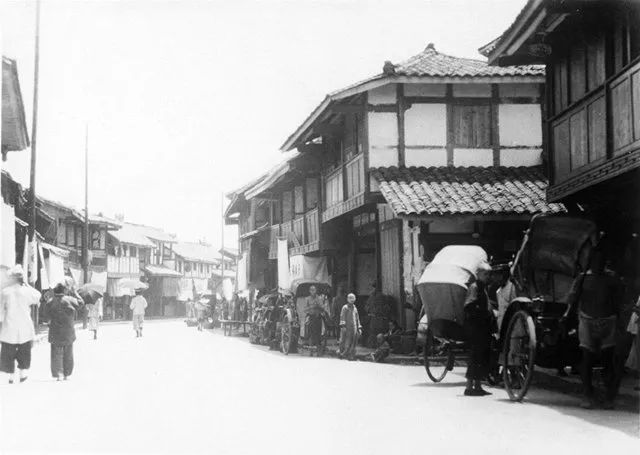 六、瑕疵举隅 王笛这几本书所取得的成就无疑是值得肯定的,也是令人钦佩的。但人都是有局限的,任何人的研究都不完美,王笛自然也不例外。 图片是王笛的成都研究与此前许多人的研究相比,相当出彩的地方。除袁廷栋的《成都街巷志》(上下)搜罗图片得到了官方的支持外,就我所见,没有一本研究成都的书,其图片搜罗及图文搭配,能与其媲美。但王笛所用上个世纪初的照片远比《街巷志》为多,且多是外国人所摄。但外国人所摄照片有一个麻烦,就是如何在照片上做文字说明。一般的外国人也就罢了,简单直接英译成汉名就蒇事。 但有两种人,他们的名字几乎都是以人类学的方式进入中国,有英文名但取了中国名:一是汉学家,二是传教士——罗安国《民国时期的民族构建和人类学:四川西部的传教人类学事业(1922—1945)》一文,在这个意义上既是写实也是隐喻(参见特勒编《多元族群与中西文化交流:基于中西文献的新研究》pp.105-133,上海人民出版社2010年版)——这两个群体的人为方便在中国研究和传福音,大多取有汉名,这不仅有一定身份认同的意思,而且也是方便他们所研究与服务的群体,与他们交流,从而产生接纳。英语著述里直接用他们的英文名完全无碍,但译成汉语或者汉语著述,则名从主人,理当用其汉名。 《街头》对不甚清楚其汉名的处理方式,如“城墙上”图片直接署英文之姓Wallace(如此安排的原因,见《街头》一书p.2译注说明)。但在《消失》里却直接署名华莱士,这就应该直接署他自取的汉名吴哲夫,他是华西乃至中国基督教教育史上的重要人物。 《街头》署Davidson and Mason的图片,在《消失》署为戴维森和梅益盛,后者没错,前者汉名陶维新。王笛说成都的足球是20世纪20年代引入(《街头》p.183),其实是上个世纪初公谊会传教士陶维新和陶维义兄弟二人所引入的。早在《跨出》一书里王笛列出一些差会的名单,“公谊会陶维新(R. J. Davidson)等在成都聚会协商”(p.566),准备筹办华西协合大学。这说明王笛并非不知道陶维新,只是做照片说明时稍有疏忽,不过这还是给读者了解人物与历史,带来了一定的麻烦。 不只是在照片说明上,存在着将传教士的名字用英文直译的问题。就是在文字的引用上,也存在这样的问题。比如研究成都乞丐的裴焕章(J. Vale),王笛直译作J.韦尔。裴焕章又名裴有文,他是内地会传教士,1889年来乐山传教,1897年到达成都。 裴焕章在《华西教会新闻》上发表了不少文章,事涉四川人文风俗、城市管理、社会变迁等。如1905年有关于中秋节的祭拜月亮的问题;1910—1911年《华西教会新闻》连续刊载裴焕章所写《占卜、算命及令人炫目的技艺》和《姜子牙》等,这也是向传教士们介绍中国的民间信仰及相关人物。 同时裴焕章还介绍了一些民间传说和故事,以及一些历史古迹,如薛涛井、杜甫草堂等。不特如此,他还涉及商贩、乞丐等群体,这方面王笛有比较多的引用。1907年,裴焕章曾主编过中文版的《华西教会报》,但由于中文稿源不足五年就停刊(白晓云、陈建明《<华西教会新闻>办刊宗旨的演变与四川基督教的本色化》(《世界宗教研究》2013年第三期pp.131-132)。 何忠义(G. E. Hartwell)是与启尔德一起最早来成都传教的同事,无论是《街头》之及何忠义写小偷(p.248),或是《走进》一书论及何忠义谈乞丐问题(p.285),还是《消失》一书描述东大街,以及一次抢劫(p.49,p.288),王笛都称之为哈特维尔。 事实上关于通惠门的照片,《街头》与《茶馆》都署Hosie,而《消失》则署谢立山,这是完全正确的。谢立山是英国外交官,是传教士、汉学家苏慧廉的女婿,他夫人谢福芸的书,前不久还有四本书如《崭新中国》等译成中文。 不特如此,王笛在处理那爱德(Luther Knight)的照片时,其后代授权时他译成来约翰(John E. Knight),那爱德是汉名,而来约翰没有汉名,故如此。否则来路德(来卢瑟)对来约翰似乎更符合中国人的父子之姓相继的习惯。 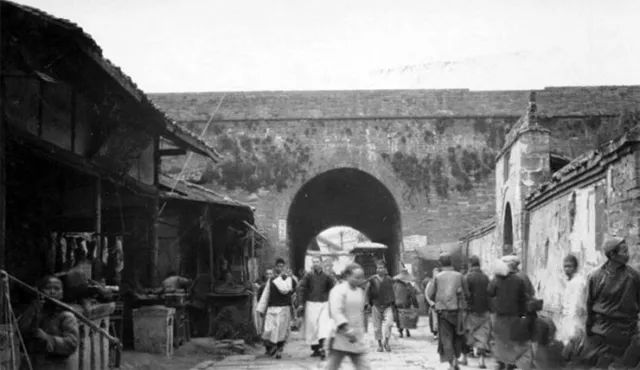 所以出现以上这些小失误,主要是忽略了传教士多有汉名的小习惯所致。司昆仑新近译成中文的《巴金<家>中的历史:1920年代的成都社会》一书,译者在这方面犯的错误亦是所在多有,这并不是为了在鸡蛋里挑骨头,而是学术规范与求真之必须。 其实这方面之未引起注意,在《跨出》一书里已经体现出来。在论述巴黎外方传教会在康雍乾禁教时期的情形时,王笛在提及川滇黔教士被逐,“但仅有波特尔(Francois Pottier)以极其隐秘的方式逃出官府注意”(p.552)。事实上,波特尔汉名范益盛,教名傅方济。 事实上巴黎外方传教会在整个西南特别是四川地区所取得的成绩,在那样严苛的形势下是惊人的。秦和平《清代中叶四川天主教传播方式之认识》(《世界宗教研究》2002第一期),特别是郭丽娜专著《清代中叶巴黎外方传教会在川活动研究》(学苑出版社2012年版)都极有力地证明了此点。但他们基本上都只讲了本地神职人员的培养,但其实彼时四川人口锐减与清政府的移民政策,对传教有着深刻的影响,不仅秦、郭没有论及,王笛也没有分析到。 传教士人数巨大,所取汉名众多,有的甚至不只一个汉名(当然有一个更为通用),这些都给学者们带来了麻烦,但这些问题也不是不可解决的。社科院近代史所编《近代来华外国人名辞典》、黄长著等主编《欧洲中国学》、黄光域编《基督教传行中国纪年(1807—1949)》等。 何况无论吴哲夫还是陶维新,王笛原来川大的同事们都有研究,如杨天宏、陈建明、周蜀蓉、龙伟、张丽萍等。“寻找大卫·格拉汉姆”的故事虽然精彩,但晚两年出版的李绍明、周蜀蓉编译的《葛维汉民族考古论集》已经完全说明对葛的研究早已开始,何况葛维汉还在《华西教会新闻》上发过一些文章,如1917年第五号上的《叙府的青年协会》。 《袍哥》里面论证望镇是哪里,考证得对,但若燕大的史料搜罗得相对多一点,就能省不少力。事实上研究华西坝教会五大学的岱峻,最近发表一篇文章《寻访燕大农村研究服务站旧址》(2019年6月24日澎湃新闻之私家历史),其论证望镇是崇义镇更为简洁有力。这就像数学有多种解题方式,但简洁优美更佳。 大约《茶馆》是王笛所有的书中,重印次数最多的。此书我曾购得一册被人借走,我便再购一册,系2018年版第十次印刷。大约没有人像我一样如此不贤识其小,看到该书p.317里第11注里的一个错,依旧不曾得到改正。“谢和耐(Jean. Chesneaux)的《中国工人运动》显示工厂工人的工资比成都茶馆工人工资高得多。”我读冯客的《简明中国现代史》提及此人时称为谢诺,后来查黄长著等主编《欧洲中国学》这样的工具书,也得到同样的印证。大约王笛因引谢和耐《蒙元入侵前夜中国人的日常生活》较多,而滋错误。谢和耐似乎只研究中国古代史与基督教及中国文化的关系,不及现代当中国史。 陈宧(1870—1939)是与袁世凯关系甚深的军人,民国后被袁世凯委以四川督军的重任,当袁准备称帝时,他格于诸种形势反袁而宣布四川独立,给袁以打击。宧与宦由于字形较近,且在用五笔打字时亦较接近,易滋错误。这方面《走进》一书在谈及1917年成都战争惨况,提及陈宧时,无论是p.326正文与p.329页28注数处全都错成陈宦,虽然介绍的内容是正确的。新近修订再版的《跨出》一书在谈及陈宧与锡良的关系时(pp.329-334)数处也全错成陈宦。 关于陈宧包括他与锡良的关系,学者赖晨有一系列文章加以研究,而且目前他好像是专门研究陈宧的学者,值得参考。当然这样的错误或许是粗心所致,比如司昆仑在《巴金<家>中的历史》一书里就提醒人们要将陈宧与陈毅区别开来,虽有音调上的区别,但对英语读者来说,总觉得这样的名字是同一个人。 至于其他小误,不说多有,也不能遍举,但细加纠察,还是能看出来的。如“周善培‘以该职商改良缫丝无,不乐于赞成’”(《跨出》p.255),自然是标点错误,与原意相反,应该是“周善培‘以该职商改良缫丝,无不乐于赞成’”。而《茶馆》p.140一幅对联显然错了:“为名忙,为利忙,忙里偷闲,且喝一杯茶去;劳力苦,苦中作乐,劳心苦,再倒二两酒来。” 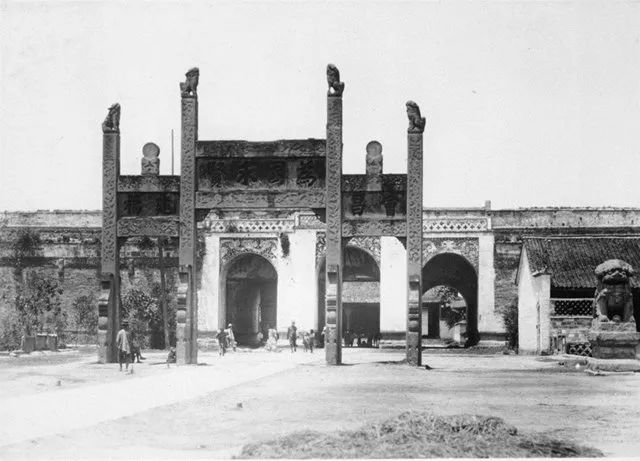 七、远不是结论 王笛对成都的研究,无论从方法还是史料上,都自有其贡献。他在成都研究上的叙事能力展现得比较充分,当然这并不是说王笛除了叙事以外,没有分析,而是二者相得益彰。 一如他的史学同行马敏评价《街头文化》时所说的一样,“没有分析的叙事是琐碎的,缺乏叙事的分析是空洞”(《追寻已逝的街头记忆》,见姜进等主编的《近代中国城市与大众文化》p.384,新星出版社2008年版),而有效地避免了二者不能协调或一方缺席的局面。 对作为一个研究历史的人来说,常常在纷繁的材料中筛选,且细致地加以分析判断,最好的结果是能够尽精微而致广大。要做到此点,在问题意识、史料来源、研究方法、思维方式、表达能力、时代切入诸方面,都不能不通盘考虑。正如历史哲学家柯林伍德所看重的历史之想像力和重演能力一样,历史研究难免化约历史本身。因为历史真正的真相已沉入那些过去的黑洞之中。化约是历史研究中无法避免的事,无论是材料选择,还是对此的解读,都无法罄尽。这种有限性,使得历史具有多种阐释,甚至答案的不稳定性都成了一种无可奈何的魅力。我们若能以此眼光看待王笛的研究,就不致于太过苛求。 原标题:《如何将二等题目做成一流学问:细说王笛的成都研究》文章内容纯属作者个人观点,不代表平台观点。 |



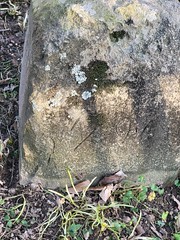
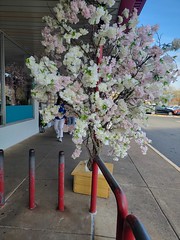
Pingback: 2022: Zhao Shukai Calls for Politics-Free Historical Research | 高大伟 David Cowhig's Translation Blog
Pingback: 2011: Ran Yunfei on Realistic Films About People Living on the Margins of Chinese Society | 高大伟 David Cowhig's Translation Blog
Pingback: 2023: Southern Weekend on US Historian Elizabeth J. Perry | 高大伟 David Cowhig's Translation Blog